














faces, we have the solutions to help – and beyond. In addition to driving commitment to innovation helps you stay your consumers. Natural* Meats | Star Ranch Angus® Beef | Reuben® Corned Beef
Tyson Foods is constantly evolving and growing to stay relevant and defend our title of the Beef & Pork Experts™.
Visit theBeefAndPorkExperts.com to learn more about our innovative solutions.









Unleash the power of real-time intelligence with City US’ SOUNDTech+ powered by DST machine learning and AI. This cutting-edge technology uncovers valuable data to help detect and prevent equipment failure with predictive maintenance that’s not possible otherwise. City’s Energy Bureau and expert facilities teams also use big data to take fast action to increase efficiency, cut costs and fine-tune asset as well as energy management. And our advanced Internet of Things framework provides a backbone for legacy and new systems alike to stay connected — and deliver insights that help sharpen your edge in real time.

Contact us at sales@cfm-us.com Learn more at CityFM.us







According to Bloomreach’s chief strategy officer, grocery needs to be customized to each shopper.
Albertsons’ Rosita Szatkowska received a $5,000 grant at the recent Top Women in Grocery event.
Breaking Through
PG presents the top 10 innovations expected to transform grocery in 2023.

Grocers should set their sights on net-zero targets by taking a holistic view of decarbonization efforts.


The food retail industry is transitioning toward a sustainable future through innovation.
Food retailers can do various things to keep their stores and offices staffed.
A visit to Bowery Farming’s largest facility to date reveals how the company is in the forefront of changing how produce is grown and shipped.
8550 W. Bryn Mawr Ave. Ste. 200, Chicago, IL 60631 Phone: 773-992-4450 Fax: 773-992-4455 www.ensembleiq.com
BRAND MANAGEMENT
BRAND DIRECTOR John Schrei 248-613-8672 jschrei@ensembleiq.com
EDITORIAL EDITOR-IN-CHIEF Gina Acosta gacosta@ensembleiq.com
MANAGING EDITOR Bridget Goldschmidt bgoldschmidt@ensembleiq.com
SENIOR DIGITAL & TECHNOLOGY EDITOR Marian Zboraj mzboraj@ensembleiq.com
SENIOR EDITOR Lynn Petrak lpetrak@ensembleiq.com
MULTIMEDIA EDITOR Emily Crowe ecrowe@ensembleiq.com
CONTRIBUTING EDITORS Jenny McTaggart, André Patenaude and Barbara Sax
ADVERTISING SALES & BUSINESS
ASSOCIATE PUBLISHER, REGIONAL SALES MANAGER (INTERNATIONAL, SOUTHWEST, MI) Tammy Rokowski 248-514-9500 trokowski@ensembleiq.com
REGIONAL SALE MANGER Theresa Kossack (MIDWEST, GA, FL) 214-226-6468 tkossack@ensembleiq.com
BUSINESS DEVELOPMENT MANAGER Lou Meszoros 203-610-2807 lmeszoros@ensembleiq.com
ACCOUNT EXECUTIVE/CLASSIFIED ADVERTISING Terry Kanganis 201-855-7615 • Fax: 201-855-7373 tkanganis@ensembleiq.com
CLASSIFIED PRODUCTION MANAGER Mary Beth Medley 856-809-0050 marybeth@marybethmedley.com
AUDIENCE LIST RENTAL MeritDirect Marie Briganti 914-309-3378
SUBSCRIBER SERVICES/SINGLE-COPY PURCHASES Toll Free: 1-877-687-7321 Fax: 1-888-520-3608 contact@progressivegrocer.com
PROJECT MANAGEMENT/PRODUCTION/ART
SENIOR CREATIVE DIRECTOR Colette Magliaro cmagliaro@ensembleiq.com
ART DIRECTOR Bill Antkowiak bantkowiak@ensembleiq.com
ADVERTISING/PRODUCTION MANAGER Jackie Batson 224-632-8183 jbatson@ensembleiq.com
MARKETING MANAGER Rebecca Welsby rwelsby@ensembleiq.com
SUBSCRIPTION SERVICES LIST RENTAL mbriganti@anteriad.com SUBSCRIPTION QUESTIONS contact@progressivegrocer.com
PROGRESSIVE GROCER (ISSN 0033-0787, USPS 920-600) is published monthly by EnsembleIQ, 8550 W. Bryn Mawr Ave. Ste. 200, Chicago, IL 60631. Single copy price $14, except selected special issues. Foreign single copy price $16, except selected special issues. Subscription: $125 a year; $230 for a two year supscription; Canada/Mexico $150 for a one year supscription; $270 for a two year supscription (Canada Post Publications Mail Agreement No. 40031729. Foreign $170 a one year supscrption; $325 for a two year supscription (call for air mail rates). Digital Subscription: $87 one year supscription; $161 two year supscription. Periodicals postage paid at Chicago, IL 60631 and additional mailing offices. Printed in USA.
POSTMASTER: Send all address changes to brand, 8550 W. Bryn Mawr Ave. Ste. 200, Chicago, IL 60631. Copyright ©2022 EnsembleIQ All rights reserved, including the rights to reproduce in whole or in part. All letters to the editors of this magazine will be treated as having been submitted for publication. The magazine reserves the right to edit and abridge them. The publication is available in microform from University Microfilms International, 300 North Zeeb Road, Ann Arbor, MI 48106. The contents of this publication may not be reproduced in whole or in part without the consent of the publisher. The publisher is not responsible for product claims and representations.
















A LOOK BACK AT A PIVOTAL TIME FOR BOTH PROGRESSIVE GROCER AND THE ESSENTIAL INDUSTRY IT COVERS.
n early November, top leaders from every corner of the grocery industry gathered in Orlando, Fla., to attend Progressive Grocer’s inaugural Grocery Industry Week. It was a pivotal event during a pivotal year in which PG celebrated its 100th birthday, I became editor-in-chief of this wonderful brand, and the grocery industry recalibrated many aspects of its operations, including returning to in-person events after nearly three years of a catastrophic pandemic.
More than 600 attendees traveled to the Hyatt Grand Cypress Resort near Walt Disney World to attend the sold-out summit, which consisted of GenNext: The Future Leaders Forum (a celebration of the most promising emerging talent in grocery); the Grocery Leaders Executive Forum (thought leadership from senior executives on the major issues post-COVID that have affected grocery); our first-ever Retailer of the Century Awards (a celebration of the food retailers that have had the greatest influence on the industry over the past 100 years); and PG’s renowned Top Women in Grocery extravaganza (the most prestigious honor for female leaders in the grocery industry).
Executives such as Kroger CEO Rodney McMullen, Meijer CEO Rick Keyes, Hershey CEO Michele Buck, Albertsons COO Susan Morris, Shipt CEO Kamau Witherspoon and Publix SVP John Goff participated in the events, among hundreds of others.
Lowes Foods President Tim Lowe kicked off the Grocery Leaders Executive Forum with an inspiring presentation on why grocers need to get into the entertainment business, especially post-pandemic.
In another forum session, McMullen explained the reasoning for his company’s planned merger with Albertsons. He said that he prefers the term “merger” to the idea of an “acquisition,” because both companies have something to offer the other.
I’m so thankful to work with such talented and wonderful people. I’m so grateful to have been given the opportunity to spend my days thinking about the evolution of grocery e-commerce, the resilience of supply chains and the future of in-store experience.
“You’ll never hear me use the word ‘acquire,’ McMullen said. “To me, it’s about merging and bringing out the best of both companies. As long as we’re humble enough, I guarantee you there are a lot of things that Albertsons does better than us. Hopefully, we’ll find some things that we’re better at as well. Together, we can create something that neither party can do individually.”
A couple of weeks after appearing at PG’s forum, McMullen and Albertsons CEO Vivek Sankaran headed to Washington, D.C., to answer
congressional questions over the merger.
PG’s multi-day conference featuring thought-provoking content and incredible networking opportunities culminated with the Top Women in Grocery Gala, where program honorees Mary Ellen Adcock, SVP of Kroger, and Michele Buck, CEO of Hershey, were honored with Trailblazer awards. Additionally, Meijer VP of Fresh Lynette Ackley was inducted into the Top Women in Grocery Hall of Fame, and the inaugural Salesforce Continuing Education Award went to Rosita Szatkowska, a grocery operations specialist from Albertsons and 2022 Rising Star. (You can read more about Rosita’s award on page 67 and more about Top Women in Grocery in this issue’s Ahead of What’s Next column by PG Managing Editor Bridget Goldschmidt on page 98.)
As I look back on my first year as editor-in-chief of PG, our triumphant Grocery Industry Week, and everything that my incredible team of editors — Bridget, Senior Editor Lynn Petrak, Digital Editor Marian Zboraj and Multimedia Editor Emily Crowe — have accomplished, I’m so thankful to work with such talented and wonderful people. I’m so grateful to have been given the opportunity to spend my days thinking about the evolution of grocery e-commerce, the resilience of supply chains and the future of in-store experience. And I’m exhilarated for what’s to come.
Gina Acosta Editor-In-Chief gacosta@ensemleiq.com

1
Black History Month
Canned Food Month
Celebration of Chocolate Month
Great American Pie Month
National Cherry Month
National Grapefruit Month
2
3
4
Change Your Password Day. Good advice, applicable both at home and at work, to start off the month.


Groundhog Day. Take friendly bets on whether Punxsutawney Phil will see his shadow.

Bubblegum Day. Make sure that the front end is stocked with an enticing selection for impulse shoppers.

National Homemade Soup Day. Point customers in the right directions with signage pointing out the proper ingredients across the store to prepare a comforting creation from scratch. 5
6
7
8
9
10
11
National Pork Rind Day. Go ahead and dig in.


National Valentine Shopping Reminder Day. Post friendly hints in the card, candy and floral departments.

National Fettuccine Alfredo Day. This classic rich pasta dish is deserving of reappraisal – and perhaps a low-carb makeover.

13
14
National Boy Scout Day. Give a salute – and a free piece of fruit – to any uniformed scouts who enter your store(s).

National Pizza Day. Why should shoppers call a takeout place when they can just pick one up from your prepared food or frozen sections?

National Cream Cheese Brownie Day. Showcase this swirly baked treat in the in-store bakery.

National Latte Day. Steer customers to your on-site coffee shop for a little espresso and steamed milk while they shop. 12

15
16
17
18
National Homegating Day. Encourage shoppers to keep the party at home when they settle down to watch the Big Game.

National Cheddar Day. Proudly display your finest wheels, wedges, chunks and slices of America’s favorite cheese.

It’s Valentine’s Day, of course, but also make sure to mark National Call in Single Day for those unattached souls who want some “me” time.
National Black Girl Magic Day. Celebrate all of the amazing African American women in your world.

Fat Thursday. This Polish observance takes place right before the 40-day period of Lenten fasting, so get the paczki (Polish doughnuts) ready.
Since Girl Scout Cookie Weekend starts today and runs through the 19 th, invite troops to set up tables in front of your stores to sell this highly popular fare.
National Battery Day. This is a good time to check that smoke detectors, flashlights and other important equipment haven’t run out of juice. 19

National Lash Day. Customers in search of the perfect smoky eye need look no further than the cosmetics aisle.

26
National Pistachio Day. Whether eaten on their own, in a range of dishes or in ice cream (yum!), these nuts pack powerhouse nutrition.

20
National Comfy Day. Now is the time to promote herbal teas, bath beads, aromatherapy and other relaxing items.

21
International Mother Language Day. Have all of your associates who learned English later in life share a (clean) phrase in their original tongue.
22
Ash Wednesday
Cook a Sweet Potato Day

23
National Toast Day. Pay homage to this simple but beloved dish by polling shoppers to see what their preferred type of bread is to toast and what their favorite topping is.
27
National Protein Day. Plant- and animal-based items get equal star billing today.

28
Floral Design Day. Let your talented floral associates show just what they’re capable of.

24
I Hate Coriander Day. Here’s a chance to change the minds of those who think this herb tastes soapy –crushing or cooking it is said to reduce any unpleasant flavor.
25
Let’s All Eat Right Day. Provide some nutritious but tasty recipes for families to try.






































Total retail sales of packaged still and sparkling water reached an estimated $23.7 billion in 2021. Increased consumer interest in health and wellness drives the market’s growth as consumers swap sugary drinks for still and sparkling waters.
Consumers’ return to social activities in 2021 greatly benefited the bottled water market, and bottled water brands across the board, from basic private label to premium aspirational brands, experienced increased growth.
Sparkling and mineral water remain two of the fastest-growing nonalcoholic beverage categories, and 2021 sales may have been even higher if not for supply chain constraints.
Functionality is the most prevalent trend within the water category as brands launch new water products that go beyond just hydration. From probiotic waters that support the microbiome, to relaxation waters that help mitigate stress, all functional benefits are on the table when it comes to water product innovation.
Flavor innovation represents a key opportunity for brands to attract younger consumers, and unique flavors can allow water to compete with flavorful beverages such as carbonated soft drinks and sports drinks. Floral- and herbalflavored waters are trending, indicating opportunities for waters that blend familiar and trending flavors, such as blueberry lavender or watermelon mint.
Basic private label bottled water is a growing segment of the water market, and while consumers view refillable water bottles as the most environmentally friendly water option, bottled water’s taste and convenience outweigh environmental concerns in the minds of most consumers. However, increased discourse regarding climate change may result in decreased water bottle purchases.
Packaged water is a growing market, thanks to high consumer interest in betterfor-you beverages and the strong association between health and hydration.

Water’s inherent health benefits should be enhanced with functional ingredients that transform water into the ultimate functional drink. Functional claims bring water into new consumption occasions and appeal to Gen Z and Millennial consumers.

Sales have increased 40% since 2016, making packaged water one of the strongest-performing markets in the beverage industry.
Flavored still and flavored sparkling are two of the fastest-growing segments of the water market, as flavor innovation makes water a more exciting and enjoyable beverage. Flavor innovation appeals to younger water consumers and is necessary for products to stand out on shelf.

mid the hustle and bustle of the holiday season, shoppers are also setting their sights on the ways that they can make positive changes for their health in the new year. Too often, customers rely on weight man agement as a barometer by which to measure their health successes or failures. Weight loss and dieting are fleeting, however, and not reliable measures of health status, despite making regular appearances on New Year’s resolution lists. Healthy eating doesn’t necessarily mean striving for the latest low-calorie food, but should instead be focused on seeking out foods with more health benefits, like helping to control or prevent chronic disease, and foods that are rich in vitamins, minerals and other nutrients.
Retailers can be allies to patrons by ushering them into the better-for-you sections of the store to highlight nutrient-dense foods that match their life styles and preferences. Throughout the aisles, plenty of products exist that combine easy preparation, affordability and impressive nutrition facts. Encourage consumers to browse healthy foods for their upcoming 2023 eating resolutions in four major grocery store sections: produce, frozen, delicatessen and canned foods.
Nutrition abounds in the produce section. Whether it’s kum quats, dragon fruits and pomegranates, or mushrooms, lettuce and tomatoes, fruits and vegetables offer power beyond the plate. These foods may increase energy, improve digestion, protect organ function, and prevent major health conditions like cancer, diabetes and heart disease. Partner with your merchan dising and category management teams to set up informative displays in the produce area that highlight major benefits of in-season win ter produce like sweet potatoes, pears, Brussels sprouts and kiwi. Invite your retail dietitians to coordinate cooking demos that draw attention to these fruits and vegetables through attractive main dishes or welcome side dishes to improve sales lift and foster customers’ health.
Frozen foods have seen much more widespread acceptance over the past several years, as evidenced by the growing share of shoppers’ carts. Meals, snacks and even novelties in the frozen section have expanded in variety and seen improvements in ingredient decks. Create window clings and add more meal suggestions within your retailer’s app to inspire customers to make meals and snacks using frozen foods. Examples include smoothies
(frozen fruit + frozen vegetables + protein powder + low-fat dairy/nondairy milk); stir-fries (frozen vegetable and noodle kit + frozen poultry/plant-based poultry + low-sodium sauce); or waffles (frozen wholegrain waffles + frozen berries + maple syrup).
The deli doesn’t just mean cold cuts and cheese slices, but also salads, prepared pastas, soups, relishes, salsas, spreads and more. Lure shoppers to this area by showcasing products that are both convenient and healthy additions to mealtime. Provide digital coupons for stacking the savings on larger quantities of foods to support New Year’s goals, such as bean-based soup, hummus, mixed green salads, roasted vegetable mixes, light coleslaws and lentil salads. Shoppers may also respond well to good deals on building a “to-go” meal from three or more deli items, or coupons toward better-for-you meal kits that take the guesswork out of eating well in the new year.
Foods preserved via canning have long shelf lives and are simple to add to healthy recipes for the home cook. Show how versatile canned goods can be with cross-merchandising efforts. Canned fruit like no-sugar-added cherries with reduced-sugar ice cream, or canned no-salt-added corn and black beans with whole wheat tortillas, make it practical for shoppers to build their carts well for 2023. Take the opportunity to clear up any confusion that customers may have about the healthfulness of canned goods by inviting your social media teams and retail dietitians to create blogs, livestreams and other digital content to emphasize the benefits associated with many canned foods.
The new year often brings a renewed interest in personal health and can provide the perfect opportunity for retailers to be true wellness destinations for their shoppers and communities.
HELP SHOPPERS MAKE POSITIVE CHANGES FOR THEIR HEALTH THIS COMING YEAR.
Retailers can be allies to patrons by ushering them into the better-for-you sections of the store to highlight nutrientdense foods that match their lifestyles and preferences.






e at NextUp held our annual Leadership Summit at the Hyatt Regency Dallas, Oct. 19-21 – our first in person since 2019. Over three jam-packed days of learning, we connected with one another and took in the inspiration and strategies that will change the working world for the better for women.
On our first day, keynote speaker Katie Goodman encouraged us to use our creativity to get our ideas out there without letting perfectionism or our inner fears hold us back, while Christine Ruggiero showed us all the value of giving ourselves permission to have our emotions as we process hard things – but then getting ourselves together and being the leaders we need to be.
The amazing Anna Gifty Opoku-Agyeman, an award-winning researcher,
preventive care for an organization. We can each be a sponsor instead of a gatekeeper, intentionally becoming someone who ushers in and equips the next generation.

Lorraine Stomski, SVP, associate learning and leadership at Walmart, gave us great advice about using our influence and our voices to support women. Development and opportunities to upskill can improve a diverse talent pipeline. As leaders, we also need to be vulnerable, owning our mistakes and lessons learned, and having truth-tellers in our lives. That makes us better leaders.
The Women in Tech panel was highly informative. The main takeaway was that female leaders in the tech industry must be intentional about creating spaces under them to bring in a diverse group of women, and we have to measure where
we are and where we want to go in improving female representation in the tech industry. Inclusion must be approached systemically, and leaders need to sponsor, not just mentor, those that they’re bringing in.




Derek Lewis, president, multicultural business and equity development at PepsiCo Beverages North America, told us that when we gain positions of power, we need to use them. We should immediately take responsibility to hire diversity in thought, skills and looks. Further, we need to make the changes that are translated into day-to-day practices. These are the minute-by-minute actions of everyday business that are necessary to create real change and enable people to be both go-getters and go-givers.


There was so much more learning than we could possibly sum up in a single article — and for all of you who weren’t there, we want you with us next year. Check out nextupisnow.org to learn more about NextUp, our mission to Advance All Women and our two annual national conferences.
NextUp is a 501c3 nonprofit dedicated to Advancing All Women. NextUp has more than 15,000 members, 21 regions, and 300-plus national corporate partners and regional sponsors committed to transforming workplaces for gender equity.




The pandemic may be finally behind us (fingers crossed), but the grocery retail landscape is still proving difficult to navigate as operators grapple with such problems as lingering supply chain snarls and surging prices due to record inflation. In such a climate, those brands that have stepped up to provide trusted guidance on how to keep sales growing not just in their particular categories — even relatively mature ones — but also throughout the store, have emerged as retailers’ staunchest allies in generating hard-won profits.
Whether by creating attractive in-store displays, rolling out smart cross-merchandising initiatives, launching effective traditional and digital marketing campaigns, developing on-target new products to meet evolving customer needs, or sharing impactful advice based on carefully gathered consumer insights, the 19 brands profiled in the following pages refused to let category and total-store sales slide, choosing to work with their retailer partners to make a real difference in the aisles.
By PG StaffBased on their submissions detailing the various ways that they helped retailers succeed despite the many real challenges encountered by food manufacturers and sellers over the past year, Progressive Grocer chose those brands whose efforts in this space our editors deemed the most impressive. Read on to find out just how each of the 19 companies profiled in the following pages earned its wellearned spot as a 2022 Category Captain.

PG pays tribute to those companies who excelled in category management during another challenging year for the grocery retail industry.











AbbottWhen a national retailer was experiencing a market share gap in the oral electrolytes category, Abbott shifted strategy to capitalize on the latest shopper trends, providing recommendations to drive category growth and market share.
Abbott conducted consumer research to understand purchase intent and incrementality to the category. What it found was that the oral electrolytes category is a growth segment, with a 14.6% five-year growth projection, and that the pandemic accelerated the importance of hydration, immunity and health. With a substantial 80% of consumers worried about protecting their immunity, shoppers expect to find oral electrolytes in three to four locations in the store, based on need state. Abbott further discovered that immunity-focused brands saw a 190% increase in sales during COVID, that one in five shoppers have tried a new product due to health messaging, and that 32% of oral electrolytes users want benefits beyond rehydration.
Based on this research, Abbott proposed the following strategy to the national retailer: Add incremental/relevant innovation to the oral electrolytes
segment and de-seasonalize immunity. The product being researched was differentiated with added zinc and magnesium for immune support, but with the trusted power of Pedialyte to hydrate. Shopper activation consisted of a digital approach to reaching parents and adults seeking cough, cold and flu solutions during the key Q1 and Q4 time periods. The plan included on- and off-site digital media and banners communicating the key benefit of immune support to shoppers. Placement was in the healthand-wellness section, reaching shoppers focused on proactively boosting hydration/immunity or on using immune support products while sick.
In July 2021, two Pedialyte Immune Support products launched at the national retailer, along with the strategy. As a result, the national retailer gained 4.1 points of market share in the pediatric digestive health category, expanded oral electrolytes usage occasions and brought new users to the category.

Further, the targeted media activation garnered a $2.11 incremental return on investment for the brand, a 16% sales lift and 49% new buyers to the brand. Perhaps most interestingly, unaided social media impact from influencers on Instagram and Twitter drove an 18% lift in brand sales.
Over the past several years, the alcohol industry has seen significant shifts in consumer and shopper preferences blurring the traditional categories of beer, wine and spirits. This shift started with flavored malt beverages and then progressed to malt-based seltzers, and now to wine and spirit-based seltzers. These significant changes in consumer demand have created complexity for shoppers and retailers alike with the emergence of a fourth category.
Anheuser-Busch has led the conversation in defining this new category, creating a framework to analyze it and introducing recommended merchandising guidelines for retailers to effectively grow these products. A-B spent hours talking to people to define the new category, which has been dubbed “hard beverages.” People define the term as fully formed alcoholic drinks generally not exceeding 20% ABV in a convenient option. Flavor is the primary attri-
bute, with a range from light to flavorful across various dimensions of carbonation, alcohol taste and drink profiles.
After A-B polled consumers to define hard beverages, the company created a category expansion framework to analyze and provide insight into growth trends, innovation white space and merchandising recommendations.
Starting with the understanding that this area is huge — $9.4 billion over last year — and that the growth is 24% incremental to alcohol, the hard-beverage space creates the opportunity to manage this complexity as a new category.
A-B also researched how shoppers interact with hard beverages to create a set of merchandising guidelines for retailers. Key principles include providing a unified location for hard beverages of any malt, wine or spirit base; merchandising



















adjacent warm and cold beverages together; and focusing cold placements on top brands with the highest rates of sale.
Using this research, A-B has worked with several retailers to bring these recommended strategies to life. A major national grocer that reallocated cold wine space to hard beverages has seen 130% growth in spirit-based hard beverages. A regional grocer that reflowed its sets to put hard beverages first in the flow has seen dollar sales grow 8% in the latest year. Also, a major national mass retailer implemented a new buying structure to reduce the complexity across traditional beer, wine and spirits responsibilities.

A-B continues to integrate these insights and recommendations into Ignite, its retail category strategy, to continue advising retailers on how to effectively grow the alcohol category. In fact, the company has leveraged both established industry research partners and cutting-edge providers to inform how the alcohol and beer category will grow.
As COVID waned and inflationary pressures grew, A-B led the conversation with the industry in terms of consumer insights, evolving occasions and shopper behaviors. Off-premise category growth has largely held from COVID, but consumer demand and shopping behavior have begun to shift. A-B brought new insights and recommendations to retail to help capture growth. The waves of
A-B recommended to a large regional grocer a proactive shelf space allocation that has contributed to 0.9 points of market share growth. Retailers continue to drive traffic through remodels in their alcohol departments and are adding more space to meet the elevated demand. A-B continues to enhance alcohol macro-space insights and recommendations to find macro-space opportunities and understand alcohol’s role within the context of the total store. A major national grocery retailer has leveraged these recommendations to add about 10 feet of additional alcohol space to its remodels, beginning in late 2022.
Additionally, the online alcohol category continues to see growth. A-B has continued its work with retailers and to make recommendations to drive online growth leveraging Ignite omni-fundamentals and growth drivers on the shifting online shopper. This year, A-B evolved its proprietary eRetail scorecard system to encompass 46 benchmarks, launching with national grocers to identify opportunities that spur online loyalty and sales.
Additionally, A-B launched The Vault in 2021, a one-of-a-kind collaboration center where it’s designing the future of total alcohol. In The Vault’s first full year, A-B hosted 15 retailers across grocery, mass, drug and convenience, each visit highlighting trends in regard to consumers, occasions and the alcohol industry,
opportunities
programming, hard beverages
capabilities.
Innovation has been a focus for A-B over the past year, with new products shaped by the macro-trends of premiumization, health and wellness, flavor, and the value equation. The company’s innovation has helped increase category growth in the grocery channel. One example is the launch of Bud Light Next, the first national zero-carb light lager.
with specific
for growth via macro-space planning, meals
and category

Challenge is laser-focused on moving the overall butter category forward for retailers and end consumers. As the largest butter manufacturer in the United States, it delivers upwards of 50%-70% of the total butter category for retailers between its Challenge and private brands, with an emphasis on driving incrementality.
While the butter/margarine category grew 19% during the pandemic as people rediscovered the joy of baking, the team at Challenge Butter was behind the scenes working to reimagine the future of butter in a post-pandemic world to ensure continued growth. Through extensive primary shopper research that took the Challenge team into the homes of butter consumers, the company discovered a huge opportunity to expand usage occasions beyond breakfast and dinner. Another key learning was the need for the category to appeal to younger demographics.
With the pandemic uppermost in consumers’ minds, and new habits engraining themselves into daily life, consumers’ willingness to adopt a healthier lifestyle only grew stronger. Chiquita took this opportunity to own the breakfast occasion by promoting cross-category consumption and reinforcing the position of its bananas as a breakfast staple.
Although breakfast is recognized by many as the most important meal of the day, various expensive options make a balanced, nutritional breakfast seem out of reach for families. Leveraging the position of cereals, yogurts and bananas as healthy breakfast classics, Chiquita teamed with General Mills on the Go Bananas for Breakfast campaign to highlight that good nutrition can be affordable.
On average, a bowl of any General Mills Big G cereal with a Chiquita ba-
Challenge’s research also uncovered that consumers shop the category through the lens of six subsegments. By understanding the distinct role of each segment, the company identified opportunities to drive new usage while simultaneously appealing to new consumers.
This research influenced retailers to re-evaluate the category for the first time in decades. The most underdeveloped segment was flavor, previously an afterthought in innovation and assortment decisions. Challenge seized the opportunity by introducing six Butter Snack Spreads in dessert and seasoned
varieties. By delivering a 45% increase to basket size, Challenge Butter Snack Spreads enable retailers to capture incremental value among butter shoppers.
Within the category’s finite space, a distinct merchandising strategy was essential to deliver on consumer needs and to capture growth. Challenge Butter Snack Spreads were the first spreadable butter varieties to be available in shelf-ready packaging, adding efficiency for retail workers at a time when labor challenges were escalating. Another first for the category was a fun augmented-reality experience for consumers through a QR code on the product lid to drive deeper consumer engagement, in addition to online shopper marketing efforts.
These unique snack spreads and creative initiatives have propelled Challenge into the position of a leading innovator in the butter category, bringing excitement, flavor and quality offerings that push the boundaries of the dairy case.

aimed to address the finding that most Americans don’t consumer the recommended daily amounts of whole grain, calcium, vitamin D and potassium, according to the 2020-25 Dietary Guidelines for Americans. By incorporating all three foods into one breakfast, Chiquita and General Mills help fuel consumers with three of the five recommended food groups — grain, fruit and dairy — delivering 12-plus grams of whole grain, 30% of the daily value of calcium, 25% of the daily value of vitamin D and 15% of the daily value of potassium.
$1, making it one of the most affordable and nutritious breakfasts around. Thus, from Jan. 1 to mid-April 2022, Go Bananas for Breakfast offered an easyto-prepare, nutritious and affordable breakfast bowl with all three brands in a limited-time offer to save up to $6 via on-pack coupons and a digital rebate.
The breakfast bowl combination
To reach its audience, the campaign used linear and online TV ads, programmatic and YouTube ads, and a robust social media campaign. To raise awareness of the campaign in-store, Chiquita built its presence outside of the produce section with point-of-sale materials in the cereal and yogurt aisles of key retailers.
In stores where both Chiquita and General Mills were present, IRI logged a 2% dollar sales increase versus 2021.
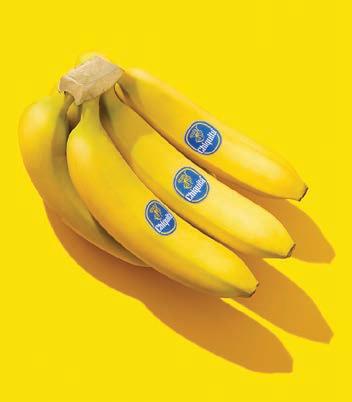






As an iconic 136-year-old brand, The Coca-Cola Co. is consistently looking for ways to deliver exciting innovation to consumers who are familiar with the brand, while investing in the refreshment of future drinkers. Developed under the successful Real Magic brand platform, Coca-Cola Creations launched in February 2022, seeking to drive engagement and relevance with Gen Z by quenching their thirst for discovery through unexpected beverages and packaging designs, culturally relevant expressions, and creative collaborations.
Coca-Cola Starlight and Coca-Cola Starlight Zero Sugar hit shelves in the United States in February 2022 as the first limited-edition flavor offering from the global innovation platform Coca-Cola Creations. Appearing on the market for about six months, the Starlight beverage was inspired by the infinite possibilities of space, fusing signature Coca-Cola taste with unexpected touches like a new reddish hue. Coca-Cola Starlight also boasted a novel packaging design featuring a multidimensional light-filled star field.
With the private space exploration sector seeing $366 billion in revenue in 2019, as reported by the Harvard Business Review, Starlight created a category solution by leveraging the outer-space curiosity of Gen Z. Throughout its limited release, Starlight generated $225 million in incremental dollars to the sparking soft-drink (SSD) category, based on data from Numerator and Nielsen. This was largely achieved by expanding existing drinkers’ consumption while also recruiting Gen Z into the category with the aim of haloing across core Coca-Cola brands.
Positive results for Starlight were realized early on: Walmart pre-order product completely sold out in one day, resulting in the highest one-day unit sell for The Coca-Cola Co. on Walmart.com.
“Walmart is leaning in,” notes Todd Wetmore, merchandising director of carbonated soft drinks at the retailer. “We deem [Starlight] as the [SSD] category’s No. 1 innovation item for Q1.”
To connect further with trendy Gen Z consumers, Starlight also became the first Coca-Cola product to debut on the popular livestreaming platform Twitch. Starlight also harnessed the power of Gen Z influencer culture by creating bespoke boxes that articulated the full magic of the Starlight experience. The campaign was anchored by a partnership with global pop star Ava Max that featured an augmented-reality “Concert on a Coca-Cola” experience available exclusively by scanning a Starlight can.
The launch of Starlight has no doubt proved successful for Coca-Cola Creations, with the products generating $57 million in total year-to-date sales, and 50 million bottles and cans sold, according to Nielsen. Starlight created a strong, positive halo around the Coca-Cola brand, with 78% of previous non-Coca-Cola purchasers having purchased another Coca-Cola product since buying Starlight.
With additional limited-edition beverages already in the works, Coca-Cola Creations is poised to introduce more innovative products and experiences across the physical and digital realms.

It was a challenging year for produce, thanks to such headwinds as supply chain disruptions, inflation, and consumer trends toward indulgent foods. Dole’s category leadership rose to meet the challenges, providing strategic direction to retail to re-engage lost buyers, optimize promotions, and implement winning pricing, merchandising and marketing strategies.
Inflation has affected shopper be-
havior, causing trade-down within the value-added salad category and switching out to commodity vegetables. One example of this includes Dole partnering with a national retailer to regain kit buyers, leveraging a $1-off-a-Dole-kit promotion.
The promotion drove a 25% increase in households buying a Dole kit and a 5% increase for any kit, along with 22% dollar sales growth for Dole kits and 4% growth for any kit among households that hadn’t purchased a kit
in the previous 12 weeks during the promotion period. Results remained similar after the promotion.
Also, higher average retails on shelf in 2022 wreaked havoc on retailers’ promotional strategies. Dole partnered with a large Midwest retailer, using its historical elasticity coefficients through Nielsen’s Revenue Management and Optimization (RMO) portal to project the impact of adjusting everyday chopped kit pricing from $3.99 to $4.19 and promoted pricing from




$2.99 to $3.14. The projected results showed a 5% increase in dollars, with little impact on unit sales, and a 5.3% increase in net revenue. Actual results proved better than projected promotional outcomes for the retailer, with an increase of 25.1% in dollars, 6.3% in units and 30.9% in net revenue.

Finally, organic continues to be the fastest-growing banana segment and the best means to drive organic volume in the produce department. Dole worked with a retailer to increase conventional pricing, narrowing the price gap to organic and fueling trade-up. In addition, Dole identified stores in which to deploy secondary display racks and marketing tactics to boost banana awareness and consumption. These actions led to organic dollar growth of 17.6%, versus
run-of-market growth of 0.7%, without cannibalizing conventional — 4.3%, versus 2.0% run of market — and increased total banana revenue of 5.3%, versus 1.5 % run of market.
Activating these pillars, Dole stepped
up collaboration to reach new heights in retail partnerships, enabling those retail partners that heavily depended on the company’s category development team to add between three and four points of growth ahead of their competitors.
You might say that E&J Gallo Winery thought outside the box when it came to making a play for sales. To capitalize on growth in the 3-liter (3L) box wine segment — which has been propelling overall wine category growth sales and outpacing the leading 750-milliliter and 1.5-liter sizes — the wine company teamed up with the National Cattlemen’s Beef Association on a Game Day Ready joint promotion in early fall 2021.
The MVP of the program was Gallo’s Black Box brand of 3L boxed wine. The No. 2 brand in its package class, that variety was up 9.9% in sales on a year-over-year basis and came in as the sixth overall wine brand in sales in the United States, according to Gallo. The Black Box portfolio encompasses Cabernet Sauvignon, Chardonnay, Pinot Noir and Pinot Grigio, sold in shatterproof and resealable boxes.
The wines were positioned as an adult-beverage choice for watching the game either at home or at a tailgate party or other celebration. Through the promotion, shoppers could score dual-purchase coupons for the product and for $5-off beef items.
As intuitive as the pairing of wine and beef seems, Gallo confirmed the potential of the program by targeting consumers who overindexed in watching professional football, baseball and basketball games while enjoying their favorite beef recipes and wine.
To kick off the promotion in eye-catching style, the company developed point-of-sale display materials that included a 3D pricer frame, an end cap kit, and a saddlebag kit featuring both Gallo and beef logos. A modified flex kit was also available, containing enough materials for three displays: a 36-foot roll, three oversize pillow signs and up to 15 price shelf talkers. Digital was part of the mix, too, through digital coupons and a QR code that enabled shoppers to enter a sweepstakes to win game-day essentials.
Many participating retailers cruised to a win with this joint promotion. One retail customer reported a 59% lift in total basket sales when Black Box was included, while that store’s meat category experienced its highest repeat purchase rate of the year. Black Box display sales at the location rose 34% and, significantly, drove a 63% increase in new shoppers entering the 3L box wine category.

The cross-category promotion aligned with Gallo’s recent investments in sporting events. In 2022, the winery became the new official wine sponsor of the National Football League, which attracts up to 180 million viewers.
On a parallel track, Gallo is beefing up its Black Box line. Earlier this year, the company introduced its Savvy Man spokesman, portrayed by actor Adam Scott, in a new campaign. The brand has also rolled out new varieties, including Buttery Chardonnay, Tart & Tangy Sauvignon Blanc, Vibrant & Velvety Red Blend, and Deep & Dark Cabernet Sauvignon.











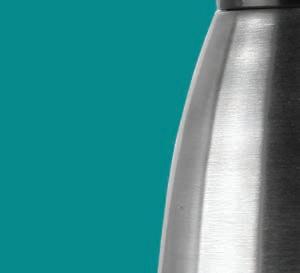

What happens when one of the most basic grocery staples meets advanced grocery tech? In a reflection of the growing power of data in the retail and CPG industries, Flowers Foods recently saw an uplift in sales of traditional sandwich bread after deploying data tools to determine the best price points and events at one of its retail customers.
Flowers, a major player in the commercial bread category, tapped cloudbased artificial intelligence (AI)-powered solutions provider SymphonyAI Retail to gauge the effectiveness of its promotions at a time when consumers have been feeling pinched by inflation and other circumstances. The baked goods manufacturer used SymphonyAI Retail’s Shopper Card data systems tool to assess shopper behavior during special promotional events at a major retailer’s stores in the Southern California region. Traditional sandwich bread was chosen as the assessment target, because that item is a crucial part of the sector, accounting for more than one-third of the category’s volume.
The results were, indeed, a slice of
shoppers’ lives: The data helped Flowers better understand how consumers react to a specific event. Among other findings, the information revealed whether shoppers were new to the brand or switching from another brand. Flowers was also able to determine whether its most valuable customers were engaged in the promotional effort and whether people were increasing their consumption.
Having such data in hand confirmed a meaningful return on promotional activity investment and verified that Flowers was on track in the commercial bread category. As the company points out in its Category Captains submission, “In the current inflationary environment, it is imperative to maximize promotional effectiveness which helps retailers, vendors and consumers offset inflationary pressures.”
From a numbers standpoint, follow-up data showed that dollar sales of traditional loaf bread at the participating stores grew 8.7% and increased market share of

As inflation has taken a bite out of many food categories, shoppers are responding by switching up what they’re buying and eating. That’s true in packaged salads, too, where there has been a bit of shifting going on.
Fresh Express switched gears along with, and, in some cases, ahead of, price-conscious consumers looking for healthy, convenient plant-based nutrition. Following an extended period of strong sales as consumers mostly ate at home, growth in the company’s value-added salads finally slowed a bit in 2021, due to price increases related to fuel costs, supply chain issues and labor challenges, among other market factors.
the SoCal market area by 24 basis points. The number of baskets and household counts increased by 2.7% and 2.9%, respectively, for the overall segment. As for ROI, the percentage of profitable promotions rose from 26% in the prior year to 44% after implementation.
Further, learning more about how people shop for traditional bread can go beyond one brand’s lift. According to the data gleaned by Flowers at the major retailer’s stores, the improved ratings metrics benefited all brands in the commercial loaf bread space.
Flowers remains a formidable player in the commercial bread category. The company recently reported that it has outperformed the total bread category for the total United States on a yearover-year basis, with an 8% lift in dollar sales versus the overall market. Flowers produces private label breads, as well as branded products under the names Nature’s Own, Dave’s Killer Bread, Wonder, Canyon Bakehouse and Tastykake, among others.
Heeding the trend and recognizing consumers’ new mindsets, Fresh Express focused its category management efforts on the impact of inflation. For example, the company suggested a promotion update from a three-for-$12 offer to a two-for-$8 offer to stay relevant. In addition, Fresh Express shared information with its retail customers on the slowing growth of premium salads and pointed out the uptick in sales of classic salad varieties.
As shopper interest in private label products intensified during inflationary times, the company also supported sales of its Fresh Express brand. The recognition of that trend and the support led to an increase in repeat buyers of Fresh Express salads, an indicator of loyalty.
The quick pivots during yet another time of volatility


worked: Several Fresh Express retail partners outpaced the rest of the market to grow their share by as much as millions of dollars, according to the company. That’s notable, since results cycled growth numbers from the growth-heavy pandemic.
Even as it focused on delivering value to inflation-wary shoppers, Fresh Express has looked ahead and kept R&D efforts rolling. The company recently launched three new chopped kit flavors and one new salad blend, adding variety and shelf interest to the category. The category management team supported planogram builds to include these new items while eliminating slower-moving and high-shrink products.
Likewise, the company has continued to invest in national promotional campaigns throughout the year, using Google PPC and display ads to drive awareness sales. Social media is a priority for Fresh Express, which has a following of 360,000 users. For the first nine months of 2022, the company’s digital ads on social media delivered 1.8 million post engagements and a 2.1 million reach, while its YouTube videos have racked up more than 810,000 views.
A campaign during Salad Month in May was particularly effective. The omnichannel program included social media, digital coupons, influencer and recipe videos, digital ads, an e-newsletter, and a recipe book.

With 125 years of experience behind it, The Hershey Co. doesn’t wait until opportunity knocks. The venerable CPG heard that one important purchase trend was coming and acted swiftly to capitalize on the move.
Hershey puts it this way: “As consumer needs change and shopper behavior evolves, it’s our job to meet them where they are.”
In an era of BOPIS and curbside pickup, Hershey has met many shoppers when they’re in the physical-store space. This opportunity is the “second basket,” occurring when shoppers pick up their click-and-collect groceries and then buy more items in-store on the same day.
There are many reasons that consumers take this additional trip, like going back for forgotten items, wanting to look at certain items in person, swapping out substitutions or purchasing items that aren’t available online. Hershey cites data showing that 10%-20% of click-and-collect trips include a second basket with a $38 average size. The current value of measured second-basket retailers is $3.4
billion across all categories, the company notes.

Given that candies and snacks have long been associated with impulse buys, the opportunity to attract consumers on their way to a second basket is strong. Candy is actually the most impulsive of the categories that land in the second basket, along with snacks, dairy and produce. According to Hershey, there’s an incremental opportunity of $102 million for the candy, mint and gum categories in this type of purchase.


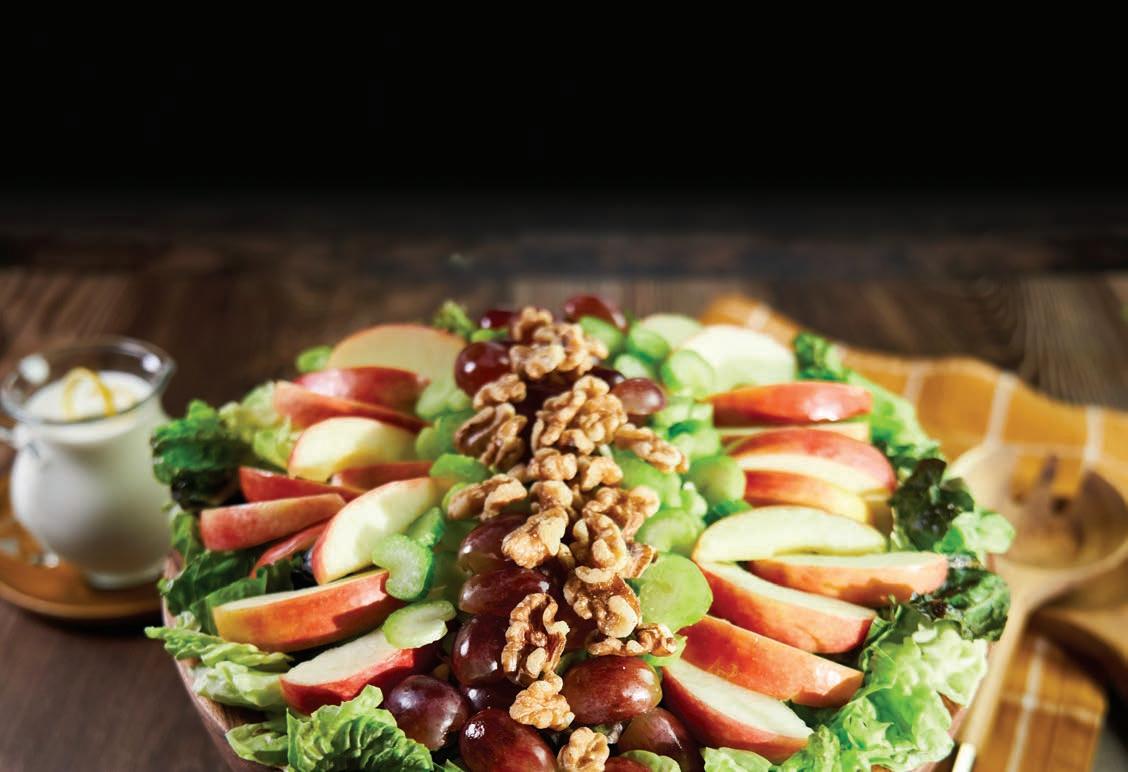

To encourage unplanned purchases and help retailers capture a sizeable second basket, Hershey’s category management and shopper insights teams are targeting shoppers through both in-store and curbside transactions. If timing is everything in promotions, it’s especially crucial here, as Hershey has determined that the most effective points of messaging happen during the “Order is ready” and “On my way” phases of the digital journey. Among other tactics, Hershey offers craving and snack solutions at curbside points, and coupons or reminders of micro-occasions and seasons to
drive shoppers back in-store.
In addition to nabbing extra sales in the second basket, Hershey is also finding new opportunities for category success through its Mobile Customer Insights Center, an expandable 53-foot tractor-trailer that looks like a rolling Hershey’s bar and delivers insights, innovation and strategy for the company’s grocery retail partners. Inside the vehicle, grocers and Hershey’s team members meet in a collaborative environment to drive strategies across different facets of the business, from transaction zones to merchandising solutions to alternative fulfillment, among other topics. Hershey notes that at the time of its Category Captains submission, the Insights Center had hosted more than 155 grocery partner attendees at 50-plus meetings around the country in 2022.





While a continually disruptive environment and evolving consumer preferences have driven changes in categories, effective category management is also changing. Hormel Foods Corp. recently redesigned its approach to strategic business planning, engaging its sales team to work cross-functionally with retailers to assess the business, identify new opportunities, and work together to co-create solutions that ultimately benefit shoppers, retailers and Hormel.
The company’s infrastructure has been redesigned
to best follow this model. Hormel is in the process of merging five independently run business units into one $8 billion retail sales unit. That unit will be supported by a new center of excellence, Brand Fuel.
Brand Fuel will pinpoint emerging insights to develop products and boost shopper engagement with optimized assortment, shelving and pricing strategies. The Brand Fuel group will also include Hormel’s digital experience team.

As part of this change, the company’s marketing team has moved from a brand-focused team to one structured on need states and solutions. On a more macro level, Hormel had transitioned into three operating segments — retail, foodservice and international — as of Oct. 31 of this year.

It’s no small task to take on so many changes at once, but Hormel has made big strides by zeroing in on shopper insights that drive decisions within categories, and then sharing those insights with retailer partners in the spirit of collaboration. One example is its relationship with an independent Midwest grocery chain; through a cross-functional, cross-category program, Hormel and the retailer teamed up to turn around a typical lull period to grow sales by 29% on a year-over-year basis and net $1.3 million in additional retail sales.

Hormel’s re-envisioned partner approach works


across many business areas, including supply chain, category vision and multibrand promotions. Another example is a campaign called The Bowl Bowl, in which many store departments — and categories — came together on an insight-based shopper solution for game day.


Sustainability, increasingly important across categories, is another area in which Hormel and its retail partners align. For instance, the new, more sustainable bottle for Planters peanuts, which uses 8% less plastic and saves 220 tons of plastic annually, has done well for many retailers since its launch in 2022. Hormel supported the refreshed packaging rollout in the nuts category with in-store displays, online advertising and social media.
New product development also reflects the company’s insights-based, shopper-centric and collaborative approach to category growth. In the dynamic plant-based space, Hormel’s recently introduced products include a line of Happy Little Plants meatballs, while its Applegate Naturals Do Good Dogs are made with 100% natural grass-fed beef raised with practices that regenerate the land.

The Idaho Potato Commission (IPC) continues to raise its data game using industry-leading insights to drive category growth for its partners. Uniquely, the commission deploys category experts throughout the country to help retailers maximize their sales in the fresh potato category. These



industry veterans canvass the country, meeting with category managers to help them stay ahead of evolving shopping patterns.
Within the potato category, one of the most interesting segments over the past five years has been 24-ounce baby or creamer potatoes, which have captured the attention of consumers, causing a wave of new items to enter the segment. As a result, some retailers have run out of space to put them and have really struggled with optimizing category space allocation. The IPC was able to step in, however, with analytics to help advise retailers on how to best merchandise and price the segment to maximize dollars.
One retailer this year experimented with a newly designed set






in 2021. The focus for the category was the 24-ounce potato segment in every color and variety imaginable. The retailer ran with the new category layout for six months and relied on the IPC’s capabilities to help it analyze the results, which were were disappointing: The category lost 20% in dollars, contributing to a precipitous loss of market share. Leveraging the IPC’s insights, however, the retailer was able to reverse course and implement mandatory 5-pound bagged russet end caps, which proved much more successful.


In addition to individualized category reviews, the IPC releasedquarterly deep dives in January 2022. Each deep dive looks at the United States on a regional basis to evaluate the changes occurring within the cate -














gory. The reviews focus on driving attention to Idaho crop supply updates, potato variety analyses and regional reports for all nine Nielsen reported regions. According to the IPC, these reports have led to multiple customer meetings with its promotion directors and have contributed to 127 in-depth category reviews across the country.
The IPC is helping retailers understand the importance of using russets to win with shoppers. One of the ways it did so was through the creation of an online tool enabling retailers to edit and add price points and recipes to build their own personalized ads. The commission also worked to increase understanding of what makes Idaho potatoes special via product quality, traceability, certified inspections and brand recognition.
A post-pandemic return to mobility and an increasing desire for convenience have led to an uptick in snacking throughout the day, with savory snacks, including pantry crackers, leading the charge. With the knowledge that consumers are averaging more than five snacks per day, that pantry crackers are a growing segment, and that 50% of all food occasions are snacks, Kellogg Co. set out to better understand current cracker shopper and consumer behaviors to find opportunities for innovation.

Kellogg used its proprietary Landmark occasion study to learn more about the loyalty and dollars of younger
households and families, with consumer and shopper research informing the fact that afternoon snacking is the No. 1 occasion for crackers. In an effort to take advantage of this key occasion, reinterest lapsed cohorts and further build baskets, the manufacturer introduced Puff’d — a munchable, grazable, airy snack that builds on a strong equity connection with Cheez-Its.
Thus far, the introduction of Puff’d has not only created a win for Kellogg, but has also helped grow incremental sales for the overall cracker category. Some 44% of cracker innovation dollar sales have been driven by Puff’d this year, making the brand the No. 1 innovation introduction in the segment. A total of 71% of Puff’d dollars were incremental to the cracker category, with 67% from category expansion and 4% from new buyers in the aisle. Puff’d is also registering a shorter purchase cycle and seeing a higher household penetration rate compared with total cracker penetration rates in households with children.
As a purveyor of fresh, dried and marinated mushrooms; mushroom powders; and mushroom sauces, Monterey Mushrooms has bet its entire livelihood on the popularity of that particular product. The company, which was established with a single farm in 1971, now has several farms across the United States and offers products for both foodservice and retail.
This past year, company was forced to weather a rough patch when demand for its products decreased. Instead of resting on its laurels, though, Monterey gathered insights from more than 2,000 consumers

As a global leader in the avocado business since 1983, Mission Produce sources, produces and distributes fresh Hass avocados to retail, wholesale and foodservice customers in more than 25 countries. The company added mangoes to the mix in 2021 and, with an eye toward further innovation, has developed several value-added services to help its customers experience the best returns in their avocado categories.
Through the use of its proprietary Avocado Intel market intelligence tool, Mission can gather data-driven insights to support category management. The tool allows the company to highlight industry trends, perform peer comparisons, analyze store performance, and provide timely category and shopper data, all of which enable it to help customers meet anticipated demand for its products, realize higher profits, attract more shoppers and reduce shrink. Avocado Intel can also inform customers of how the market is responding to Mission’s products and uncover new growth and sales opportunities in real time.
This year, the tool was used to substantially improve organic avocado sales for one of Mission’s largest retailer partners. The company found that 90% of this retailer’s organic avocado shoppers were purchasing organic avocados elsewhere, and that in the Southeast region, this retailer had only a 32% market share of organics, compared with a 51% market share of total avocados. Mission then profiled the shoppers who were purchasing organic avocados elsewhere and found that they earned high incomes, skewed toward families with children and were highly committed to organic products.

Using the information it had gleaned, Mission recommended that the retailer use a bag better designed for the shopper demographic it was missing, and also supported the retailer in the transition. The results were impactful, with the retailer’s avocado category sales increasing by 62% in dollars and 36% in volume year over year. Additionally, dollar and volume shares of the market increased by 8.4 points year over year, and volume share increased from 29.40 to 37.80.
At a retail site in one particular region, Monterey chose to place a special emphasis on its growing segments, reviewing everyday retails and aligning promotions with category goals. Over this period of intense scrutiny, sales were up 5.0 points, units were up 4.4 points and pounds were up 3.3 points over the rest of the market. In another region, the same focus was placed on reviewing retails and promotion alignment, and sales went up 2.2 points, units rose 3.9 points and pounds increased 3.5 points over the market.
and revisited its category management approach to develop a plan that focused on growing segments and increasing the size of purchases with frequent users.
The company’s new approach, along with a special understanding of its partners’ goals for the category, helped create strong results during a very challenging time.


In a year plagued by inflation, supply issues and shifting consumer preferences, many brands in the olive oil aisle have been forced to pass along a price increase to consumers, causing them to consider switching to less healthy fats and oils. Pompeian, meanwhile, was able to increase sales and build the value perception of olive oil through new promotions, innovations and marketing efforts.
The manufacturer, which offers consumer-friendly packaging with extra-virgin olive oil descriptions such as “Fresh & Fruity” and “Robust,” also spurred category consumption with the launch of seven new e-commerce items. Each olive oil is also labeled with the best uses for its specific variety, including those for roasting, sautéing, stir-frying and mixing into marinades.
The company further found success by reaching out to consumers in unique ways. Its new strategic communications

Produce provider NatureSweet expanded its fair-trade partnership to two strategic divisions within a large national retailer in early 2022. The program provided the retailer a point of differentiation in the market when media outlets brought attention to the unethical treatment of agricultural workers in North America. Fair trade ensures that workers receive fair wages, work in safe conditions, protect the environment and obtain community development funds to improve their lives.
Fair trade has given NatureSweet the opportunity to add value to the entire supply chain, as well as allowing the company to continue to pursue its mission of transforming the lives of agricultural workers in North America by keeping people its top priority. In tandem with what it does for its associates and their families and communities, NatureSweet’s commitment
platform helped drive olive oil loyalty via distinct narratives spotlighting product education, usage-heavy recipes, and the benefits of shopping farmer-owned, planet-friendly brands. On social media, Pompeian expanded its target and prioritized video, a bolder tone/aesthetic and relatable recipe content.

These pivots generated a 746% increase in paid Facebook and Instagram
engagements between the first and second quarters, as well as a 31% increase in Instagram impressions. Retail-driving influencer programs resulted in more than 42,000 cart additions of the company’s products via Instacart, and an Amazon Live with the same objective drove approximately 500 sales in one hour.
Additionally, Pompeian prioritized stock availability and speed, as well as price reductions tied to on-shelf communication during key selling periods, with one such effort generating a 26% incremental sales lift over Easter. The company also worked with complementary store departments to encourage at-home cooking, and in the Midwest, Pompeian put a display in the produce section where shoppers could receive a free bag of potatoes with the purchase of Pompeian olive oil.
All of this led to double-digit sales increases for Pompeian that offset category volume declines and bolstered category dollar sales compared with last year.
to Fair Trade Certification augments its already long-standing relationship and certification with EFI, also known as the Equitable Food Initiative. This initiative was executed at the national retailer’s fair-trade divisions through on-shelf mini billboards, secondary displays with messaging, and online banner ads that
received 328,359 impressions, or more than 20,000 impressions per day, in May 2022.
In the first eight weeks through June 18, the two fair-trade divisions realized a 200-basis-point advantage in dollar percentage growth and a 50-basis-point advantage in trips over the remaining national retailer’s non-fair-trade divisions. These improvements led to the fair-trade divisions realizing a 30-basis-point greater improvement in market share within the snacking tomato segment than the non-fair-trade divisions. The fair-trade divisions sold nearly 273,000 pounds across three items, resulting in a $13,000 premium paid to support fair-trade initiatives transforming communities.
Additionally, fair-trade initiatives are voted on by NatureSweet associates. Each of NatureSweet’s agricultural plants have fair-trade committees to represent associates. Members are elected by peers, and a supervisory board serves as the voice of about 5,000 associates.

















Initiatives include education, child care, food, health services, housing, infrastructure, training and community services. For example, an education program teaches associates to read and write. In 2021, about 150 associates earned their high school degrees.
Each of NatureSweet’s facilities has a health and safety manager who leads developmental training, addresses issues and takes precautionary measures to prevent any injury. The company provides preventive health care for associates that includes access to a variety of medical services, with mental and emotional health top priorities. This is why NatureSweet created programs like Sweet Life, which gives associates access to psychologists and one-on-one therapy. Additionally, the Sweet Family program is a 16-week course that educates associates on human development, with topics such as parenting and emotional intelligence, to name just a few. Initiatives like these help complement the company’s purpose, which comes back to improving the lives of agricultural workers in North America.
Although inflation surpassed COVID as the chief concern for U.S. consumers this year, Pharmavite’s new product initiatives were able to help sustain vitamin, mineral and Supplement (VMS) category growth. Post-pandemic, selfcare has risen to the top of the category entry points. Consumers are no longer thinking of the category for a specific health concern, but as a ritual to proactively take care of themselves. This has resulted in the VMS category evolving into two distinct needs for purchase conversion: general wellness and specialized needs.

To ensure that the company is serving both types of consumers, Pharmavite’s Nature Made brand expanded earlier this year with the launch of Nature Made Wellblends, a line of 13 scientifically developed supplements to keep the wellness cycle of sleep, stress and immune health in balance. Stress leads to sleep problems, and both issues can compromise the immune system.
To support its curated line of products, the company kicked off a partnership in June with home organization experts and stars of the popular Netflix series “Get Organized with The Home Edit,” Clea Shearer and Joanna Teplin, to inspire people to optimize their wellness routines and keep stress, sleep and immune health in balance. Through the partnership, The Home
Edit founders shared their own experiences as well as how Nature Made Wellblends’ targeted solutions helped them proactively support their overall well-being as they navigate running their business, motherhood, busy schedules, travel and life’s stressors. Retail media campaigns ran across traditional TV as well as streaming platforms, and digital and social channels engaged influencer support. Additionally, relevant lifestyle- and health-focused podcasts reached consumers throughout their day in key markets.
Meanwhile, Pharmavite has also committed to advancing its operations. In fact, the company was working to alleviate pandemic-induced supply chain challenges long before COVID ever reached North America. Specifically, in the past year, the company consolidated bottle sizes, added airfreight methods of bulk deliveries and stretched its organizations teams to the max to get product on retail shelves.



Pharmavite also revamped its recruitment process to attract top talent as its needs have grown.

To help retailer partners be as successful as possible, Pharmavite’s Aisle of the Future project has identified top-level insights for retailers and brought them to life online and in-store. Pharmavite category managers have introduced new options to help retailer partners fit their strategies against a menu of proprietary opportunities to best match joint business needs. The category management team has a deep toolbox of resources at its fingertips, including an assortment optimization tool for retail line reviews. This model has helped simulate demand transfer of volume when items are removed from or added to the assortment, enabling retailers to seamlessly make category assortment and new-item decisions.

The expectations for a more engaging and frictionless shopping experience have never been higher. Pet care company Nestlé Purina knows that brands and retailers that drive these elevated experiences will stand out above the rest. As a result, the company is dedicated to delivering omnichannel solutions in this space and demonstrating the importance of the pet category with its strategic partners.
Dedicated pet end caps have been a foundational merchandising solution that Purina’s Shopper Innovation & Experience team has recommended to retail partners for years. But as the world becomes more digitally connected and focused on the omnichannel experience, the company has partnered with strategic retailers to drive more pet category traffic, brand conversion and customer loyalty through purposeful digital solutions, all rooted in Purina’s emerging category insights and strategies.
These solutions are brought to life at Purina’s Retail Innovation Center, in St. Louis — an experiential learning lab highlighting omnichannel solutions that inspire new business prospects — and are then used to engage top retailers in a proprietary co-creation process to build out opportunities that deliver mutual value for the retailer, Purina and ultimately, the pet shopper.
Using the Retail Innovation Center’s co-creation process, the team inspired a Meijer-specific solution with the SVP of merchandising, marketing team and buyers. This drove immediate buy-in on an idea to launch an interactive end cap at scale, anchored in a category-first approach. For example, instead of leading with a Purina One brand story, the project started with a narrative on the power of “outcome-based nutrition,” and then supported it with why the Purina One portfolio could deliver on that need. These category “stories” change throughout the year and feature anything from litter education to the benefit of variety in wet cat food, and even cause-based programming.
Pet parents have certainly taken notice of these interactive end caps powered by “lift-andlearn” technology during their shopping trips to Meijer stores. This is evident in the impressive results for both the Midwest grocer and Purina since the launch of the engagement tool. For instance, Perch-enabled stores are consistently outperforming non-Perch-enabled stores by double digits, and Purina is seeing brand growth in nearly all strategic segments. Even more exciting are the analytics that the team has captured regarding engagement rate, which continues to climb, showing that this solution is establishing a new shopper behavior while driving conversion. That’s a win-win for both the retailer and the CPG company.

Meijer Inc. is one of Purina’s most progressive partners, and during its annual business-planning visit to the Retail Innovation Center the retailer was introduced to an interactive pet end cap powered by Perch technology — a digital in-store solution that seamlessly incorporates a digital screen to automatically sense which products shoppers touch, and then responds with videos and information about the product.

 By Lynn Petrak
By Lynn Petrak
or products that have been considered commodities for decades, it’s all about the specifics for beef and pork right now. From down-to-the-farm origin details to the best price points to tailored instructions, consumers want the goods on red meats offered by brands and grocers.
The nature of the current retail environment is driving these and other demands for beef and pork, which are also invariably affected by livestock supplies. A 2022 IBM report concludes that “consumers want it all,” and notes that purpose-driven consumers who choose products and brands based on how well they align with their values represent the largest segment of consumers. Other recent research from FMI — The Food Industry Association and NielsenIQ shows that 80% of shoppers want at least one other indicator beyond ingredients and nutrition information, like certification and claims, allergen information, and values-based details like animal welfare, fair trade and labor practices. Also, in today’s economy, shoppers want to arm themselves with price information to get the best deal possible.
The market for beef and pork, at least in the near term, reflects shoppers’ appetite for specifics.
As 2023 approaches, one can expect the trend of storytelling to continue with beef and pork products. That trend began a few years ago, when protein companies added more details about farmers and ranchers on their websites, social media platforms and even on packaging.
Kent Harrison, VP, marketing and premium programs at Springdale, Ark.-based Tyson Foods, confirms that such information resonates with shoppers, especially when it comes to sustainability.
“We know that our independent ranchers and farmers view the land and their cattle/hogs as so much more than just a business — it’s their livelihood, their heritage and their legacy for future generations,” notes Harrison. “It’s our role as a brand to champion American agriculture, and to do so we must increase transparency in our animal welfare practices and sustainability efforts
In 2023, one can expect the trend of storytelling to continue with beef and pork products.
Meat processors and their retail partners are also expanding their portfolios to include products from additional or different sources.
The issue of price versus value in the meat case will likely continue next year.
Today’s consumers are seeking extraordinary eating experiences they can enjoy without guilt — like the world-class sophistication of Trusted Veal from Europe. The trusted taste of traditional Dutch veal is the finest in the world — with lofty standards of quality, sustainability, animal welfare and food safety that live up to the legend. Give today’s confident cooks an irresistible reason to keep coming back to your meat case — the continental allure of European Veal.




Discover More at TrustedVeal.com



with shoppers. These are topics that consumers care about and influence their purchasing decisions.”
Other beef processors and brands are emphasizing sustainability as they share information with consumers. “Beef producers and brands must consider consumers’ perceptions of sustainability,” asserts Jim Rogers, SVP of sales at Arkansas City, Kan.-based Creekstone Farms Premium Beef. “On an aided basis, almost half of meat eaters assume sustainably raised meat addresses antibiotic/hormone and animal welfare topics. At Creekstone Farms, all cattle can be traced to their ranch of origin, and our team has invested in telling the stories of our cattle producers to help consumers understand where their food comes from.”
In addition to connecting shoppers with producers, meat processors and their retail partners are expanding their portfolios to

include products from additional or different sources. Niman Ranch, of Westminster, Colo., for example, recently introduced a USDA-graded 100% grass-fed and -finished beef program, and is touting the products’ sustainability and taste benefits.
The new grass-fed beef is raised by independent family ranchers without antibiotics or hormones and is 100% Certified Humane, an ASPCA-approved third-party animal welfare certification, according to Niman Ranch.
It’s been a year of sticker shock at the meat case, something that those in the red meat and retail industries hope to avoid in the coming year. The consumer price index for beef in particular led several other foodat-home categories at various points in 2022.
As producers grappled with market dynamics like a drought that affected cattle supplies, volatile hog production, and Russia’s war in Ukraine that drove up feed costs, consumers balanced their taste for red meat with their pocketbooks that pay for it.
Midan Marketing, a marketing, research and creative agency with offices in Chicago and Mooresville,


“It’s our role as a brand to champion American agriculture, and to do so we must increase transparency in our animal welfare practices and sustainability efforts with shoppers.”
—Kent Harrison, Tyson Foods
N.C., recently conducted a study showing that consumers still have a penchant for beef — 88% purchase at least some conventional beef products — but are keeping tabs on prices.
“We know price followed by quality indicators, such as USDA grade, are the top purchase influencers when consumers are purchasing beef,” observes Michael Uetz, principal at Midan Marketing. “This is true both for consumers purchasing beef to cook at home and those ordering beef at restaurants. At retail, 64% of beef consumers are considering price either first or second.”
Prices have also edged higher in the pork sector. A report conducted for the National Pork Board showed that retail pork prices spiked 27.3% from January 2020 to May 2022. Earlier this fall, the Des Moines, Iowa-based board suggested ways to incorporate pork into


budget-friendly meals, like using smaller portions of lean cuts and choosing lower-cost products like ground pork.

That said, a portion of the shopper base isn’t always trading down to more value cuts for beef or pork. “At the retail meat case, price concerns do not always translate to consumers purchasing less premium meat,” points out Creekstone’s Rogers. “One of the few times when retail price will matter less is when the consumer is already trading down from dining out at a restaurant to eating at home. For these occasions, consumers have already made their budgetary decision and are seeking an elevated eating experience.”
That brings the discussion back to price versus value in the meat case, a push-pull that will likely continue in 2023. “’Value’ is the name of the game now, but not all shoppers define value in the same way,” explains Uetz. “While there will definitely be more shoppers focusing on grinds and multi-meal roasts to get the best value, there will also be others experiencing less economic pressures who continue to define value as USDA Prime or Wagyu or beautiful ribeye steaks. These shoppers are looking at creating a restaurant experience at home, for less. Focusing only on low-cost value will have producers leaving money on the table.”
According to Rogers, there’s plenty of opportunity between the lowest-cost cuts and the most premium choices. “Identifying budget-friendly options like strip loin roasts as alternatives to ribeye roasts can keep consumers within the beef category and help them enjoy the flavor and quality they know and love,” he says.
Given the nature of cattle and hog production, the supply outlook will help guide food retailers’ expectations for beef and pork going into 2023. The U.S. Department of Agriculture (USDA) recently projected that the production of proteins in the United States, including beef, pork, chicken and turkey, will decline by 1% next year compared with 2022.
As retailers navigate market shifts stemming from external factors like livestock supplies, inflation and other socioeconomic curveballs that may be coming, they’re working with suppliers who are keeping pace with consumer interests and demands. At Tyson, Harrison notes that the company has continued to invest in automation, technology and safety enhancements, including a $300 million project at its caseready plant in Eagle Mountain, Utah.

ANY OUTLOOK FOR BEEF AND PORK SHOULD TAKE INTO ACCOUNT THE MARKET FOR ALTERNATIVES TO TRADITIONAL RED MEATS.
In the much-buzzed-about plant-based space, R&D efforts continue. Plant-based protein company Beyond Meat, of El Segundo, Calif., recently added a new plant-based steak (see page 97 of Editors’ Picks), and a Vancouver, British Columbia-based company, Urbani Foods, has rolled out Misteak, a vegan ribeye-like steak. Meanwhile, Redwood City, Calif.-based Impossible Foods’ newest product is meatless Impossible Pork, containing 18 grams of protein, with 59% less total fat compared with 70/30 blends of ground pork.

Still, meat alternatives and analogs aren’t taking over grocery cases anytime soon. Beyond Meat, for its part, did turn in growth this year, but at a less-than-expected rate, and its stock slid. Major meat processor JBS USA, based in Greeley, Colo., revealed that it’s shuttering its plantbased meat business, Planterra. Also, the 2022 “Power of Meat” study, conducted by 210 Analytics on behalf of FMI — The Food Association, shows that only 9% of consumers are eating plantbased meat alternatives weekly.
What about cell-based meats? The “Power of Meat” report indicates that 40% of consumers are unwilling to try cultivated meats, but the category did get a push forward with the mid-November clearance approval of lab-grown meat by the U.S. Food and Drug Administration.


Food retailers interested in streamlining different aspects of their business have many technology solutions to choose from, but which will be most essential in the coming year and beyond? Progressive Grocer wanted to know on behalf of our readers, so we want straight to the sources: the developers of some of the most exciting grocery technology offerings around.
Across grocery order fulfillment, retail media, price optimization, digital marketing and more, the experts PG asked weighed in with thoughtful takes on what retailers can expect from a range of technologies adapted to the grocery sector, and why it’s in food retailers’ interest to implement them. Read on to find out what solutions might be the right fit for your operations. Responses have been edited for length and clarity. Also, check out the online version of this guide for even more advice from other tech visionaries.
The most important upcoming technology that grocers will need to have in their stores/facilities is maximizing the use of prescriptive decision-making, driven by data science and artificial intelligence (AI).
Just a few examples of this in action are: Directing an associate to take the most optimal next task in your store/warehouse.
Optimizing assortment by balancing variety where it matters to the customer while minimizing costs to keep the shelf full. Automated warehouse ordering so a retailer can order the appropriate amount of products from suppliers to meet demand while being as operationally efficient as possible.
By allowing prescriptive data science and AI to take over the predictable tasks, you are able to free up an associate’s time to work on the problems that data science and AI can’t solve. In the end, embedding data science and AI-driven prescriptive decision-making will deliver a stronger customer experience leading to customers rewarding you with a higher share of their wallet and stomach.
A simple solution with access to the appropriate data embedded within business systems is more impactful than a complex machine-learning model not embedded within the processes that the associates leverage. A fancy model disconnected from the associate’s day-to-day operations is likely to be blind to constraints and ultimately underused to make decisions. To avoid this common pitfall, grocers must do two things:
PG HELPS IDENTIFY THE BIGGEST TECH TRENDS FOR THE SAVVY GROCER BY HAVING THE CREATORS OF VARIOUS CUTTING-EDGE SOLUTIONS WEIGH IN.Mike Pane VP, Data Science,
84.51°


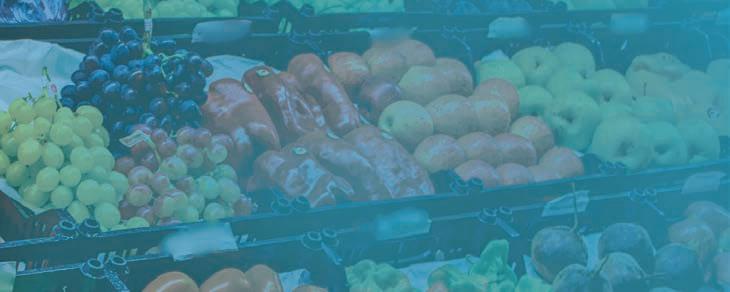






Having a strong omnichannel strategy is a must for grocery retailers striving to compete in an increasingly digital world. Progressive Grocer asked Mark Fairhurst, VP, Marketing at Mercatus — a leading SaaS grocery platform provider — to explain why that is such an important step in charting a path to profitability.

Progressive Grocer: Mercatus conducts a lot of grocery industry research. What you are seeing?

Mark Fairhurst: We’re seeing a surge in mobile commerce usage that will continue to grow. It currently accounts for 10% of all digital grocery sales, up from 6% a year ago.1
Grocery retailers deserve a native mobile experience that engages customers and offers a convenient shopping experience. A branded, first-party mobile app enables “always-on” shopping, which means customers can check out flyers and coupons, add items to their cart, and choose Pickup or Delivery anytime from anywhere. We’re also seeing a clear correlation between a mobile experience that amplifies value and grows brand affinity and a retailer’s online profitability.
PG: What does it take to build a sustainable, profitable eCommerce strategy?
MF: We look at eCommerce through the lens of control, cost, and convenience.
With our platform, retailers can take full ownership of their first-party channel experience online. Third-party marketplace solutions erode consumer loyalty. Grocers today are making investments towards owning their first-party channels. A strong first-party commerce solution lets grocers regain control of their brand experience, customer relationships, and long-term value.
Strategies that lower the cost-to-serve online customers are just as critical. With margins being what they are, retailers must be able to efficiently assemble and distribute orders and generate digital advertising revenue Customers also don’t like the higher prices, extra fees, and
tips that come with Delivery. Shifting customers to use Pickup means grocers can reduce third-party marketplace commissions and appeasement fees.
Flexible delivery times, ease of use, and personalization are some factors that go into delivering an “always-on” shopping experience. Most customers shop online because it’s convenient, so if grocers aren’t maximizing convenience from the moment they engage with customers they’ll likely lose them. That’s why it is important to focus on making things like basket building and checkout as frictionless as possible.
Progressive Grocer: What keeps grocery retailers up at night when they think about the impact of eCommerce?
MF: Retaining online customers. Data shows that 25% to 30% of monthly active online grocery shoppers regularly cross-shop between regional grocers and Mass merchants. A key component to Mass merchants’ success is their focus on making their online channels convenient to use. Grocery retailers must scrutinize their online buying experience, from the ordering process through to fulfillment, and make sure they’re doing everything possible to make it a convenient experience for customers.
Progressive Grocer: How can grocers reclaim some of the market share lost to Mass merchants?
MF: It goes back to strategy. How can grocers protect their brand and retain control of the first party channel experience? How can they cost-effectively operationalize fulfillment? How can they make the customer experience more convenient? Choosing a partner that can innovate with the retailer’s business interests in mind is a good place to start.
That’s the approach we took with our soon to be released next-gen mobile experience. Our new native app lets retailers customize promotions based on purchase history and browsing behavior, recommend products based on real-time customer data, and place branded products in strategic locations to catch a customer’s eye. The easy-to-navigate app lets shoppers complete checkout in just a few clicks, and offers a new Shop Landing Page with configurable aisles and tiles that encourage them to build their carts quickly and convert.
Going forward, grocery retailers will fuel online growth by providing a differentiated customer experience that blends technology, insight, and operational excellence to encourage more frequent repeat purchases. It comes down to knowing who your customers are, understanding what they want, and developing better ways to satisfy those needs.
1Harnessing Mobile Commerce for Customer Loyalty. PYMNTS. 2022.





Inflation. It’s on consumers’ minds when they’re shopping for groceries, and on retailers’ minds as they strive to offer those groceries at the best price possible while also providing superior customer service.
Progressive Grocer asked Joe Smirlies — an expert in sustainable Fresh Item Management solutions and the SVP of Product at Invafresh, the industry leading fresh food retail operations platform — to discuss how technology can help grocery retailers tackle today’s economic challenges and build a competitive advantage for future success.
Progressive Grocer: Let’s talk a bit about the macrotrends fueling disruption in grocery retail today. Joe Smirlies: Inflation is a big one — and it’s putting pressure on consumers and retailers alike. In fact, 58% of respondents in Invafresh’s 2022 Grocery Innovation Study1 identified inflation as the number one threat to their business. And for good reason. Just look at what’s happening in fresh food: Prices in that category rose nearly 7% in 2022 alone. Add to that supply chain disruptions, availability, labor shortages, and changes in consumer buying patterns, and it’s easy to see why grocers are struggling to accurately forecast demand and need a technology solution to deal with these challenges. While fresh is admittedly complex, it is something technology can help solve.
PG: But hasn’t the grocery industry been slow to adopt technology?
JS: COVID catalyzed exponential growth in online ordering and grocery delivery, and consequently accelerated the need to embrace technology. As a result, grocery retailers are becoming more adept on that front. It’s not that they don’t want to implement technology; they just face an uphill battle trying to. According to our survey, 57% of respondents identify budget, 48% identify the disruptive impact of new technology, and 45% identify the lack of on-site technical expertise as constraints they face when it comes to adopting new technology.
The fact is that grocers face an uphill battle to compete with digital-first grocers like Amazon Fresh, who are becoming more prominent in today’s increasingly techdriven marketplace. Adopting new technologies is essential
for future success as our survey shows 64% of retailers consider digital-first groceries at least a reasonable threat to their business.
PG: Can a single tech platform really address all of these challenges head-on?
JS: Yes. Grocers in our survey identified decreasing costs (43%), improving customer experience (37%), and managing labor shortages (34%) as some of the biggest challenges they face. AI and automation can help them tackle all three.
For example, technology is essential to cutting costs, which is imperative given the significant challenges inflation and supply chain disruptions pose. In addition, AI and automation can be used in a variety of applications to not only optimize processes, but to provide superior customer service, as well.

The bottom line is that the Invafresh Fresh Retail Platform gives grocers the tools to play offense with inflation, address the digital-first threat, alleviate labor shortages, and achieve faster ROI across the industry.

Overall, grocery retailers who use the Invafresh platform, with its strategic focus on the fresh food experience, are realizing annual benefits of US $80,000 to US$100,000 per store; see a 5% to 15% increase in sales growth due to merchandising their full assortment of products, stock availability, and customer affinity; and can achieve up to 20% to 40% less shrink by improving the accuracy of their ordering and having an understanding of their perpetual inventory and known/unknown shrink.2
Sunbury, Pennsylvania-based Weis Markets has implemented Invafresh’s Fresh Retail Platform to automate ordering, production and inventory management across all fresh departments in its 198 stores. The partnership includes the implementation of demand forecasting, in-store production planning, food traceability, recipe management, and cut test management, enabling the company to meet customers’ expectations with the freshest foods while more accurately predicting demand.
12022 Grocery Innovation Study; September 2022 survey of 100+ grocery decision-makers;
TO LEARN MORE, VISIT INVAFRESH.COM/STUDY.
1. Invest in the appropriate business systems. To do this successfully, it will take the cross-section of technology and business teams coming together to ensure that they make the appropriate technology decisions to enable the day-today execution of the business while setting up for the future. Too many times, technology decisions are made that are not compatible with where data science and AI can take and enable the business.
2. Understand the problem you are trying to solve. Allow your data scientists and technologists to spend ample time with the business experts to truly understand their problems and constraints. Data scientists themselves must bring humility to this discussion. The associates in stores and warehouses, the merchandising and supply chain leaders, all know their business the best. They are the experts, and the data scientists and technologists should spend time learning from them and truly understanding the business. Collectively, they should be looking for ways to help them do their jobs more efficiently.
The grocers that embrace leveraging technology, driven by prescriptive data science and AI, will get the right product to the right place at the right time, cost and quantity, all while delivering a superior customer experience. Given the broader economic and competitive pressures facing grocers, they have to be more efficient than ever, and the winners will be those that integrate prescriptive data science and technology with people. This will allow them to anticipate the customer’s ever-changing needs and deliver upon the most personalized experiences as efficiently as possible.

—Mike Pane, 84.51°

Over the next year, technology will be vital in the future landscape and success of retailers as they continue to struggle with widespread challenges like staffing issues, which will force them into full or hybrid forms of automation. Video and audio solutions can be leveraged as an all-in-one alarm system, a theft deterrent and aggression detection, while internet protocol (IP) audio solutions can enable canned messaging and/or two-way audio interaction. Devices can also be integrated to provide real-time notifications to customer support or a security operation center. Additionally, retailers can leverage solutions to create a virtual attendant for customer service needs at self-checkout for customers needing specialized assistance, and as a physical security deterrent. In 2023, these and other solutions like computer vision will continue to provide transactional integrity, improved inventory accuracy and a better understanding of customer shopping patterns to maximize store optimization and marketing, improving the overall customer experience.
When it comes to navigating today’s fast-growing technology ecosystem, retailers should maintain an innovative mindset backed by a cohesive strategy in every aspect of their business. Open-source platforms, for one, provide a foundational base for future technology integrations, ensuring that retailers are properly positioned to take full advantage of new solutions as soon as they’re up and running.
With the massive increase of devices being placed on networks across industries, it’s important that retailers are mindful of the impact these devices have on their organization’s overall network, as well as how each device will provide useful, actionable intelligence by ingesting, aggregating and normalizing all collected data. With that said, in 2023 they should consider cloud or hybrid computing solutions; surveillance cameras with edge computing power that supports third-party analytics (virtually eliminating the need for on-premises servers); and modular surveillance cameras to reduce back-of-house network density (a.k.a. network cabling and switches). These solutions not only provide a wealth of information to retailers, but they also provide opportunities for shortand long-term cost savings.
Lastly, partner selection is very important in the retail world. Retailers should ensure that they are selecting agile partners that are stable and will continue to provide innovative solutions, support their organizational growth strategies, and collaborate on future store designs and concepts.
“Given the broader economic and competitive pressures facing grocers, they have to be more efficient than ever, and the winners will be those that integrate prescriptive data science and technology with people.”
“Open-source platforms … provide a foundational base for future technology integrations, ensuring that retailers are properly positioned to take full advantage of new solutions as soon as they’re up and running.”
James Stark, Axis CommunicationsTeresa Aprile, Co-Founder and CEO, Brandcrush

Grocery retailers will need to employ omnichannel retail media technologies to manage their entire 360-degree retail media ecosystem to maximize their revenue potential.
The focus to identify and align marketing efforts that drive the greatest conversion, in-store, out-of-store and online, is driving a need for a complete 360-degree view of the shopper. Retailers also seek a consolidated approach to retail media across the entire ecosystem to drive efficiency and scale.

On-site and off-site platforms have driven scalable transparency and execution. By contrast, in-store, out-of-store and other online media channels have not been so scalable and seamless. Managing omnichannel media involves multiple stakeholders and disparate processes and systems, many of which are still manual. These complexities, inefficiencies and silos have limited retailers’ ability to scale.
Omnichannel retail media technology will drive transparency both internally and externally. This technology removes many silos across the merchandising, e-commerce and shopper marketing teams, which unlocks further scalability and revenue maximization.
The digital management of all owned media assets, in-store, out-of-store and online, can drive significant margin point gains for retailers, and boost control and ownership of their media ecosystem.
The right omnichannel retail media technology can empower retailers to grow their top and bottom lines by maximizing their media opportunities and efficiencies by:
Efficiently connecting omnichannel media buyers and sellers across the retailer ecosystem, including merchandising, marketing and retail media teams.
Powering long-tail supplier monetization, allowing retailers to service small and medium enterprises and mid-market brands, along with larger players with self-serve and scalable solutions.
Adopting an end-to-end approach to owned media across the ecosystem and integrating partners to drive a single centralized solution.
Powering retailers to better serve their suppliers and collaboratively develop investment strategies that yield high returns with closed-loop reporting.
Retailers have a sizable retail media opportunity ahead of them, but the fragmentation that exists in their media ecosystem limits their revenue potential. They also need to focus efforts to counter global inflation forces, rising costs and an overall decline in margin. An omnichannel retail media strategy can yield high margin returns for retailers.
With brands actively moving marketing budgets as close to the point of purchase as possible, any retailer that is not actively planning for a 360-degree approach to their retail media opportunity will miss out on an extremely lucrative opportunity.
It’s no longer a matter of why or when, but how and what are the best technology partners for retailers to scale with to fuel retail media growth.
surable impact reducing loss and increasing profit margins within weeks.

Artificial intelligence (AI) should be a strategic investment for every leading grocer. It has the potential to transform the entire retail business — from supply chain to inventory and self-checkout. Several major grocers are leading the way, using visual AI to manage inventory, create a better shopping experience and minimize shrink.
Visual AI gives retailers the ability to see across the entire retail footprint (front, middle and back of store); identify issues; and solve problems. The payoff is significant, from huge cost savings to dramatically improved shopper satisfaction.
Grocers should think big when it comes to AI — about how they can tackle large-scale business problems and pioneer new territory. A smart strategy for getting started with AI is to focus on one aspect of the store, and tackling shrink/loss prevention is a great first step before tackling other challenges. Starting with systems that can integrate with existing hardware and software can generate significant ROI quickly, with mea -
From tackling shrink, grocers can extend their use of visual AI to other aspects of the business, using the intelligence and actionable insights already generated. The power of AI, and what sets it apart from other technologies, is that it learns and improves over time and can evolve to support the evolving needs of the business.
Without visual AI for loss prevention, grocers remain in the dark trying to grapple with the retail industry’s annual $100 billion shrink problem. From honest mistakes in the stockroom to organized theft at checkout, it’s nearly impossible for retailers to put their finger on exact figures and cause without the ability to see everything everywhere. That’s an even more unwelcome dynamic in the coming year as grocers face the triple threat of tight margins, inflation and an economic downturn. And, with global shrink projected to grow at 20% annually, it’s not a problem grocers can afford to ignore.

SPEAKING WITH.. .Sean Turner, Co-founder & CTO, Swiftly

Retailers are facing a sea of challenges as they navigate this holiday season and prepare for the coming year. Progressive Grocer asked Sean Turner, co-founder & CTO at Swiftly and member of the Forbes Tech Council, how technology can transform the challenges of today into the opportunities of tomorrow for brick-and-mortar grocery retailers.
Progressive Grocer: Grocers are waging an uphill battle in an increasingly competitive marketplace. How would you sum up the situation they’re facing?
Sean Turner: Record-high inflation, unprecedented gas prices, ongoing supply chain issues, shrinking margins, and looming mergers are accelerating competition for shoppers’ dollars. And it’s not only grocers feeling the pain. We ran a consumer survey in November, and out of 1500 respondents, roughly 70% said they’re struggling to pay their grocery bills due to increasing costs. This is just one example of the impact economic challenges are having on today’s retail environment. Throw in the growing preference for a tech-centric customer shopping experience, and it becomes clear that retailers will need to up their digital game to remain competitive moving into 2023 and beyond.
PG: As a leading provider of retail technology solutions, Swiftly is on the front lines of grocery retailing. What impact do you see technology having in that space?
ST: Simply put, technology solutions are going to be the key to survival for brick-and-mortar retailers as they address the growing expectations and strained budgets of today’s shoppers. Yes, customers are back to shopping in-store, but they now rely on digital solutions to help them shop — and save — more than ever.
Shoppers are shifting gears when it comes to their reliance on retail apps, with over 50% of our November survey respondents sharing that they rely on cost-saving tools such as loyalty programs and digital coupons to stay on budget. Additionally, the number of shoppers buying online, then picking up in-store or curbside has decreased from 45% to 32%1, while the number opting against home delivery is expected to increase by 25%.2 What’s this all mean? If retailers don’t choose digital transformation now, they’ll pass the opportunity to attract and retain customers — and revenue — to the competitors who do.
PG: What’s the solution? Can traditional brick-and-mortar grocers with limited staff and tight budgets really compete with e-commerce giants like Amazon?
ST: Yes, the retail giants have a broad reach. But retailers of every size can capture market share. There are four key steps to a successful digital transformation, and they’re easier — and more cost effective — to implement than you’d think.
■ Give shoppers a user-friendly, savings-rich mobile app. Most shoppers actively use their smartphone in-store, so offering a mobile app that reaches them along every step of their shopping journey is, what I would argue, the most important step.
■ Create a loyalty program. Shoppers are looking for the best deals and they depend on retailers to help them find them. Over half of respondents in our survey rely on loyalty programs and rewards to help offset increasing grocery prices.1 And 15% of shoppers say they spend more when they join a loyalty program.3
■ Establish a retail media program. Retail media is now 11% of total ad spend.4 With $100B in margin-rich revenue on the table, there’s never been a better time for retailers to establish their own retail media program.
■ Find an insights-driven partner who offers real-time, first-party data and analytics measurement. The days of relying on third parties to manage customer relationships and handing over valuable first-party data are over. When retailers own their digital properties, they have a deep understanding of individual customer behavior, spending habits, and lifetime value that lays the groundwork for omnichannel success.
PG: Any final thoughts you’d like to share?
ST: Customers will never abandon their phones, competitors will vie for their loyalty, and brands will continue increasing their advertising investments. The only way brick-andmortar retailers will continue to grow and succeed is understanding trends, embracing new technologies, and adjusting their digital transformation strategy accordingly.
2023 is just around the corner. So, I’ll end by asking grocery retailers: “What steps are you taking to upgrade your technology in ways that will help you succeed in the new year?”
GET STARTED ON THE ROAD TO DIGITAL TRANSFORMATION TODAY! www.swiftly.com
1Swiftly Consumer Survey data; survey conducted Nov 2022 via Gutcheck; 2ChaseDesign Online Shopper Survey; 3Coresight Research4; WPP’s GroupM



Ultimately, retailers must procure the products that their customers want at the right price, place and time. Given macroeconomic challenges and price sensitivity, retailers should focus on supply chain management. There is an immense amount of data within the food tech space coming from suppliers and inventory systems, as well as point-ofsale tools, which can all help inform retailers about where issues may arise in their supply chain before they occur. However, data only goes so far if retailers cannot take action on the insights that they’re able to glean and get the right products to the shelf quickly.
A built-in recommendation engine can help retailers discover new products that their customers want and optimize their shelves. This is one example of a tool that can help grocery stores not only with innovation, but also with backfilling supply chain challenges and out-of-stocks that might happen due to global supply issues.
The retailers that can source the products at the right price, place and time will win. An emerging trend important for grocers to keep an eye on is shifting consumer loyalty as consumers are trying new products. Whether it means stocking new brands or ensuring customer favorites are always in stock, grocers that don’t use supply chain technology to stay ahead of trends and keep shelves stocked will quickly become obsolete.
Co-FounderMost important is using software to create omnichannel experiences for each shopper, on a one-to-one basis, at scale. Truly personalized shopping across e-commerce and physical environments will
Pavich, Senior Director of Retail Innovation, Revionics, an Aptos Company

The past three years should have taught retailers that disruption is the new norm. Not only have retailers had to deal with COVID, supply chain challenges, labor issues and inflation, they have also had to deal with those issues simultaneously during a period of massive consumer shopping shifts at the product, brand and channel levels. The retailers that have best weathered the storm while growing share and profits are the ones who had previously invested in more dynamic artificial intelligence (AI) pricing capabilities. By investing in dynamic AI pricing capabilities, those retailers were not only able to respond faster to emerging trends and shifts in demand, but also with smarter outcomes that created better value propositions for their customers while achieving top- and bottom-line objectives. The upcoming year will be no different, as numerous challenges and disruptions (including hints of recession) are on the horizon. Having a sophisticated, flexible platform that allows you to price for any situation and do so faster than your
no longer be aspirational in 2023 – it will be table stakes, especially in the wine, beer and spirits category.
Grocery retailers that place shoppers at the center of each personalized experience will win. They’ll win by using the right customer data and the right product data at just the right moment. Retailers that don’t create these shopping experiences will simply become irrelevant.
competition will remain a winning investment for retailers. Retailers are moving faster and smarter than ever before, and tomorrow’s winners are continuing to invest in the capabilities that will enable them to adapt and compete in an increasingly disruptive environment.
Grocers that choose not to adopt a sophisticated, dynamic AI pricing platform will lose customers, profits, revenue and share over time. Merchants already have a lot of responsibilities to deal with, and it is nearly impossible for them to understand the exact right price for every item in every location without help from the best analytics available. Not only do the best pricing platforms offer better outcomes, but they also enable more efficient processes, which also free up merchants to spend more time on other initiatives to drive more value.
Retailers that don’t invest in the best technologies will also be unable to evolve their processes to become more efficient, which will lead to even more challenges. They will eventually be unable to compete in a very tough grocery industry, as they will be too slow, too inefficient and too out of touch with their customers.

E-grocery micro-fulfillment centers (MFCs) will be one of the most important new technology additions to grocery stores in the next year and beyond. Currently, grocers spend almost an hour of labor per online customer orders, versus the six to eight minutes to shop that same order in an MFC. Not only will MFCs allow grocers to be more profitable, but they also significantly reduce the 8% out-of-stocks that online customers are currently experiencing from many grocers shopping on the sales floor. On the sales floor, store shopping associates are competing with brick-and-mortar customers for the last strawberry yogurt on the shelf, versus the controlled inventory environment of a micro-fulfillment center attached to a store.
Grocers can use fast-pick MFCs to enable 30-minute delivery with various delivery service partners. This enhanced convenience not currently available with the slower salesfloor shopping process will create double-digit online sales

growth. MFCs will also create cross-channel strategic partnerships via B2B alliances. Supermarket chains will be able to create branded alliances with c-stores, drug stores and quick-service restaurants, adding thousands of distribution points to create new customer experiences. This will be a game changer for the food industry. MFCs allow grocers to create small supermarkets inside drug stores with their perishables and own brands, as well as drop off/deliver grocery orders with prescriptions directly to consumers.
Supermarket shareholder value is currently being destroyed by unprofitable online grocery models. Chains that do not develop online profitability will not succeed as the business becomes 20% of their sales. Also, grocers that do not reinvent the consumer convenience experience with cross-channel alliances enabled by MFCs will find themselves at a huge competitive disadvantage when they are faced by retail wolfpacks made up of supermarkets, c-stores, drug stores and quick-service restaurants all working together against them.





Offering customers in-store restroom access can sometimes be problematic when restroom misuse creates substantial operational cost, unsafe conditions and risk for staff and customers. Enter Good2Go.
We sat down with Adam Smith, Head of Operations for Good2Go, to learn more. Adam joined Good2Go after a 20+ year career at Whole Foods Market, where he led the real estate, design, construction, and facilities maintenance teams through a period of exponential growth in one of the most complex and competitive markets in the U.S.

Q: What challenge is Good2Go solving for Grocers?
A: Most cities have inadequate public restroom facilities. As a result, businesses bear the burden of providing restroom access not only for their customers, but for the general population. Providing this access is expensive and labor intensive. Restroom misuse like vandalism, theft and drug related incidents are common and significantly add to the overall cost of maintenance. This can create undesirable or unsafe conditions for both customers and staff. Good2Go offers a solution that addresses the negative impacts of restroom access. Good2Go positively addresses all of the following:
Labor: The system is completely digital and automatic; it requires no keys or codes to keep track of, or staff to grant (or deny) access.
Cost savings: Digitizing access assures accountability and deters costly misuse. Our data shows an immediate and significant ROI; deterring just one incident of misuse covers the monthly fee. Additionally, there are dramatic cost reductions in supplies, repairs, maintenance, and security.
Brand value: Damage to brand reputation can be devastating and extremely difficult to overcome. Conversely, consumer data demonstrates that brands with a reputation for clean, safe restrooms are favored by consumers and result in higher sales and brand loyalty.
Q: What can Grocers expect when integrating?
A: A quick, one-time installation process produces immediate benefits and dramatically reduces misuse and improved conditions. In addition, customers love “the magical” touchless experience. Grocers can also gain valuable data for volume and timing of restroom access that includes total uses by hour, day and month.
Q: What makes this the right time for Grocers to join Good2Go?
A: The Good2Go solution significantly eliminates restroom misuse. Businesses realize an immediate impact on their loss prevention efforts, protect staff and customers from unsafe conditions and achieve clear savings on supplies, maintenance, and cleaning expenses. n
Find out more about Good2Go solutions on www.bgood2go.com
SIGNIFICANT improvement in staff safety & job satisfaction

ersonalization is the name of the game for Brian Walker, chief strategy officer at Mountain View, Calif.-based commerce experience cloud company Bloomreach. In his GenNext keynote speech, which took place on the first day of Progressive Grocer’s Nov. 2-4 Grocery Industry Week event in Orlando, Fla., Walker noted that while today’s methods of personalization use technology and data to give customers what they want, he believes that retailers also need to get back to basics in an effort to get to know their customers and develop better relationships with them.
“Personalization in the grocery industry, it’s really going back to the first principles, in a sense,” Walker explained of today’s consumers. “Understanding their culture, their customs, their diets, their families … What we’re talking about here in personalization is how to bring that forward.”
While grocery moved toward a generic experience that focused on mass marketing and mass distribution for several decades, today’s shoppers expect more, Walker said, especially considering that food is one of the most personal and important human experiences. Among the attributes that are most important to today’s consumers are taste, culture, season, holidays, religion, ethics, fitness and therapy.
“We need to recognize that we can make this a lot better,” Walker said. “Even to make it more acute, we need to recognize that, with the pandemic, customer loyalty, in a sense, is up for grabs.”
Continued Walker: “Customers tried new brands, and they tried new channels in ways that hadn’t been the case before. That physical real estate that your organizations have invested in for years and that control of the mindshare of the customer, that’s not really the paradigm.”
With many consumers unlikely to return to their pre-pandemic shopping patterns, attributes like convenience and delight are even more poised to perpetuate the customer transformation. As such, Walker referenced McKinsey & Co. data showing that 71% of customers expect personalization and that 76% are frustrated when they don’t see it.
Additionally, 78% of consumers are more likely to repurchase or recommend
a product when they see personalization attached to it. With that in mind, Walker explained, retailers shouldn’t think about personalization as something cynical or related to spying on shoppers. “Customers want it, and customers expect it,” he said.
In a broader sense, personalization can be thought of as making it easier for a customer to navigate both in-store and online, making relevant product and service recommendations, tailoring messaging to needs, and offering targeted promotions.
“For customers, this is what personalization means to them, and it’s not just a product recommendation,” Walker said. “It’s really the experience that they’re talking about and how you communicate with them.”
Deeper understanding of personalization is necessary to better connect with today’s consumers, especially through advanced product discovery, site navigation and search experience, cross-category selling, seasonal collections, and localized personalization rules, including demographics.
In the end, Walker believes that investing in data is an important piece of the personalization puzzle. “A strong foundation of customer data, a strong foundation of product data, is really critical,” he said. “Invest there. This is what’s required to drive personalization.”
“A strong foundation of customer data, a strong foundation of product data, is really critical. Invest there. This is what’s required to drive personalization.”
—Brian Walker, Chief Strategy Officer, Bloomreach
she graduates from UMass in 2024.
“When I was at USC, I saw the value of how much you can grow and learn from earning a degree, so I know that when I receive my BA and master’s, it will continually shift my mindset on how I view business and the way I can show up as a leader within the industry,” she explains.
Szatkowska has been on a swift track at Albertsons, where she recently worked on a special assignment related to the metaverse. Based in the Southern California area, she has also worked as a district customer service manager and store director, having started her career as a deli/bakery clerk.
ALBERTSONS’ ROSITA SZATKOWSKA RECEIVED A $5,000 GRANT AT THE RECENT TOP WOMEN IN GROCERY EVENT. By Lynn Petrak
ducation happens every day and in many ways. That’s what Rosita Szatkowska has discovered about the food retail industry that has become her career and passion.
“I’m always learning something new. For me, this industry is about the constant and never-ending pursuit of growth and how that will impact the business and customers,” says Szatkowska, a grocery operations specialist at Boise, Idaho-based Albertsons Cos. who earned a 2022 Top Women in Grocery (TWIG) award from Progressive Grocer in the Rising Star category.
For her outlook, performance and achievement toward her goal of ongoing learning, Szatkowska has also received the inaugural Salesforce Continuing Education Award, a $5,000 grant presented by PG and Salesforce. She was named the 2022 winner at the TWIG dinner gala and awards ceremony in Orlando, Fla., on Nov. 4.
The Salesforce Continuing Education Award will allow Szatkowska to continue her studies at the University of Massachusetts (UMass), where she is currently pursuing a bachelor’s degree in business administration. Her perennial curiosity and dedication to the industry led her to embark on her undergraduate degree not long after graduating from the University of Southern California’s (USC) Food Industry Management Program; she’s already making plans to enroll in a master’s program in business administration at USC after
While she prides herself on being a mentor, her own mentors laud her work and determination to keep learning. “I have worked closely with Rosita in multiple points in our careers, and she continues to be a pioneer in innovation and leadership,” observes Ray Villarreal, a district manager at Albertsons. “She is determined to make any project she is placed on a success and is confident … that she will get the job done.”
Julie Field, who was Szatkowska’s district manager at Albertsons for two years, notes that her capstone project at USC won the top prize. “I am familiar with her educational goals, as well as the challenges she will face when it comes to funding college tuition,” says Field. “I cannot think of anyone more deserving than Rosita.”
The funds from Salesforce and PG will cover at least one semester of that tuition.
“We were proud to partner with Salesforce on our inaugural Continuing Education Award,” notes John Schrei, publisher of PG. “We felt that providing an opportunity for continuing education fit our respective visions and was a great new way to highlight the professionalism and drive that all of our Top Women in Grocery honorees strive for every day.”
Adds Schrei, “We look forward to growing this aspect of TWIG every year moving forward.”
TWIG nominations will open in early 2023. Next year’s honorees in the Rising Star and Store Manager categories will be eligible for the second annual Salesforce Continuing Education Award, which will be presented at the gala in November.

e don’t often get to sit back and take a deep peek at the future of the grocery industry. Progressive Grocer’s Retail Innovation Outlook for 2023 attempts to do just that, however.

Over the past three years, grocery retailers have had to reassess and reinvent nearly every facet of their operations. Digital transformation, pandemic disruption, economic uncertainty and unpredictable consumer behavior have left the grocery industry at a tipping point. The future of the industry depends on innovations that increase efficiencies, drive growth and create a next-gen grocery shopping experience.
The power of PG’s annual Retail Innovation Outlook lies in offering a practical look at how grocers are thinking about meeting these challenges in the future. We narrowed down a long list to 10 areas where innovation is occurring in multiple dimensions. These are areas where, over the course of 2022, we witnessed profound change and expect more change in the coming year.
In 2023, foundational changes to the grocery landscape will continue. We expect food retailers to focus their innovation value propositions on foodservice, private brands, social commerce, customer loyalty, store design, retail media, labor solutions, personalization, sustainability and consumer trends.

Changes to the grocery landscape will continue, and grocers will be looking for ways to solve big and important challenges. The innovations in PG’s Retail Innovation Outlook all aim to change the industry in a profoundly positive way, and retailers have amazing ideas about how to do just that. We hope that these big ideas kindle further optimism regarding the future of the grocery industry, where there’s never a lack of excitement about what kind of transformations the future will bring.
Sustainability-minded shoppers are increasingly scouring grocery aisles in search of brands and products that provide environmental, social and economic benefits. Companies that share stories about the origin of their products, prioritize people over profit and provide transparency about their business practices are getting a lot of attention from these consumers, and are expected to see even bigger business in the coming year.
When it comes to purchasing packaged foods, sustainability considerations now influence the majority of the world’s grocery shoppers, according to a recent study from food corporation Cargill. Specific claims, including “sustainably sourced” and “conservation of natural resources,” topped the list of those most sought after by consumers, along with other specific claims such as fair trade certified or reduced packaging.
While today’s grocery customers clearly aspire to be more sustainable, behavioral research firm InsightsNow found significant differences between what consumers desire and what they actually buy when shopping in stores. The company found that 42% of shoppers aspire to shop for sustainably sourced products, but only 5% are able to actually do this. A lot of wiggle room is available for grocers and manufacturers to provide more sustainable options at lower price points.
In addition to the products that they offer, grocers should be able to walk the walk and talk the talk when it comes to sustainable business practices ranging from food waste reduction and electric vehiclecharging stations to using more environmentally friendly refrigerants and prioritizing animal welfare.
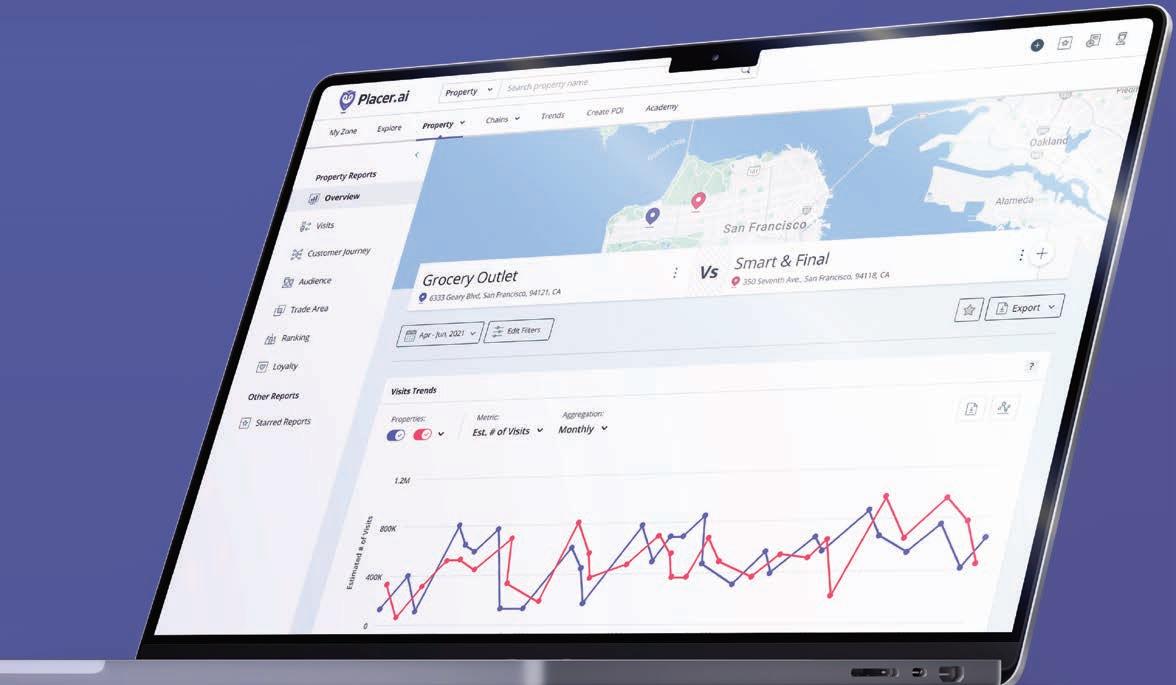
LOYALTY 3.0
How do you keep a customer loyal when the path to purchase is more fragmented and dynamic than ever before and shoppers are constantly changing their behavior as a way to fight off inflation?
According to Ethan Chernofsky, VP of marketing at Placer.ai, it’s all about customer experience and value right now.

“The power of repeat visits was incredibly clear over the course of the pandemic, with wholesale club leaders like Costco, BJ’s and Sam’s Club leveraging the inherent stickiness of their business model to drive consistent visits and revenue growth,” notes Chernofsky. “Even in the grocery space, chains that thrive on high numbers of visits per visitor, like Publix, Albertsons and Kroger, were among the most successful and effective supermarket banners in recent years. The key is to ask what drives loyalty. In the current environment, value is one obvious component, but the ability to deliver a positive experience, both in terms of what can be accomplished during the visit itself and the quality of the goods purchased, is equally critical. A final piece is asking what chains can offer to differentiate, whether it be exclusive products like Trader Joe’s, focused merchandising to specific markets, or even more immersive promotions and in-store experiences. Loyalty is key, but the path to loyalty needs to be tailored around a specific chain’s unique attributes.”
Another way to differentiate is by acknowledging that consumers may be overwhelmed with engagement from retailers and brands right now. This is where customer experience comes in. Retailers that deliver authentic, meaningful value to shoppers by prioritizing personalization, customized deals and timely offers will win loyalty in this — or any — competitive environment.
—Gina AcostaWhen the workforce gets tough, the tough get flexible. The tight labor market over the past two years has certainly caused grocers to rethink recruitment and retention tactics. One of the more notable approaches that has emerged — and promises to be a big topic in HR departments in 2023 — is the flexible workforce, in which employees have more input into their schedules, and employers provide more options. A study from the ADP Research Institute found that 67% of workers feel empowered to take advantage of flexible working arrangements, compared with 26% before 2020.
The model has been effective in the gig industry as shoppers for Instacart and DoorDash drivers have been able to generate a revenue stream largely based on their own timing. In November, an independent owner/ operator of a Chick-fil-A in Florida made headlines when he received nearly 500 applications in a matter of days for one full-time position. The hook? A three-day work week.
While that may not work for grocers that have to staff large stores, the positive response to flexible workforces and the realities of a labor shortage that may not return to pre-pandemic levels anytime soon are enough to spur more creativity in hiring and scheduling at stores, distribution centers and even corporate headquarters. Improving technologies will accelerate that movement as tech providers refine scheduling programs and apps that enable more flexibility without onerous spreadsheets.
It’s already happening: In October, Schnuck Markets introduced its Shnucks Flexforce employment option at some of its St. Louis locations, allowing workers to choose their shifts and store sites.
—Lynn Petrak“Foodservice at retail” is one of those concepts that seem to ebb and flow, depending on the time and circumstances — remember when “grocerant” was such a big buzzword? Given the convergence of convenience, price and elevated expectations, however, innovative food retailers have fresh opportunities to distinguish their offerings and engender loyalty with restaurant-style meals, snacks and drinks.
FMI — The Food Industry Association underscored this potential in its recent 2022 “Power of Foodservice at Retail” report, which showed that 25% of shoppers are buying more grocery foodservice items than a year ago and have exceeded dollar and unit sales volume from 2021 and 2019. The ubiquitous factor of inflation is driving many orders, as 53% of shoppers report that grocery foodservice is a good value compared with traditional restaurants.

Capitalizing on these trends into 2023, grocers can revamp their menus to offer items beyond the usual fare (nothing against fried chicken and mac and cheese, but
those are pretty basic); change up formats and store design to make the in-store dining experience more satisfying; and promote the heck out of meal deals for busy, budgetconscious and discerning shoppers.
Kroger is one retailer that has enhanced its foodservice program, recently expanding its Mix Food Hall concept created in tandem with Kitchen United. Meanwhile, smaller operators have also found success, like Standard Market in Westmont, Ill., which draws crowds to its on-site restaurant serving up items like pork belly tacos and margaritas. Expect more innovations and strategic partnerships from national chains and indies alike in the coming year.
—Lynn Petrak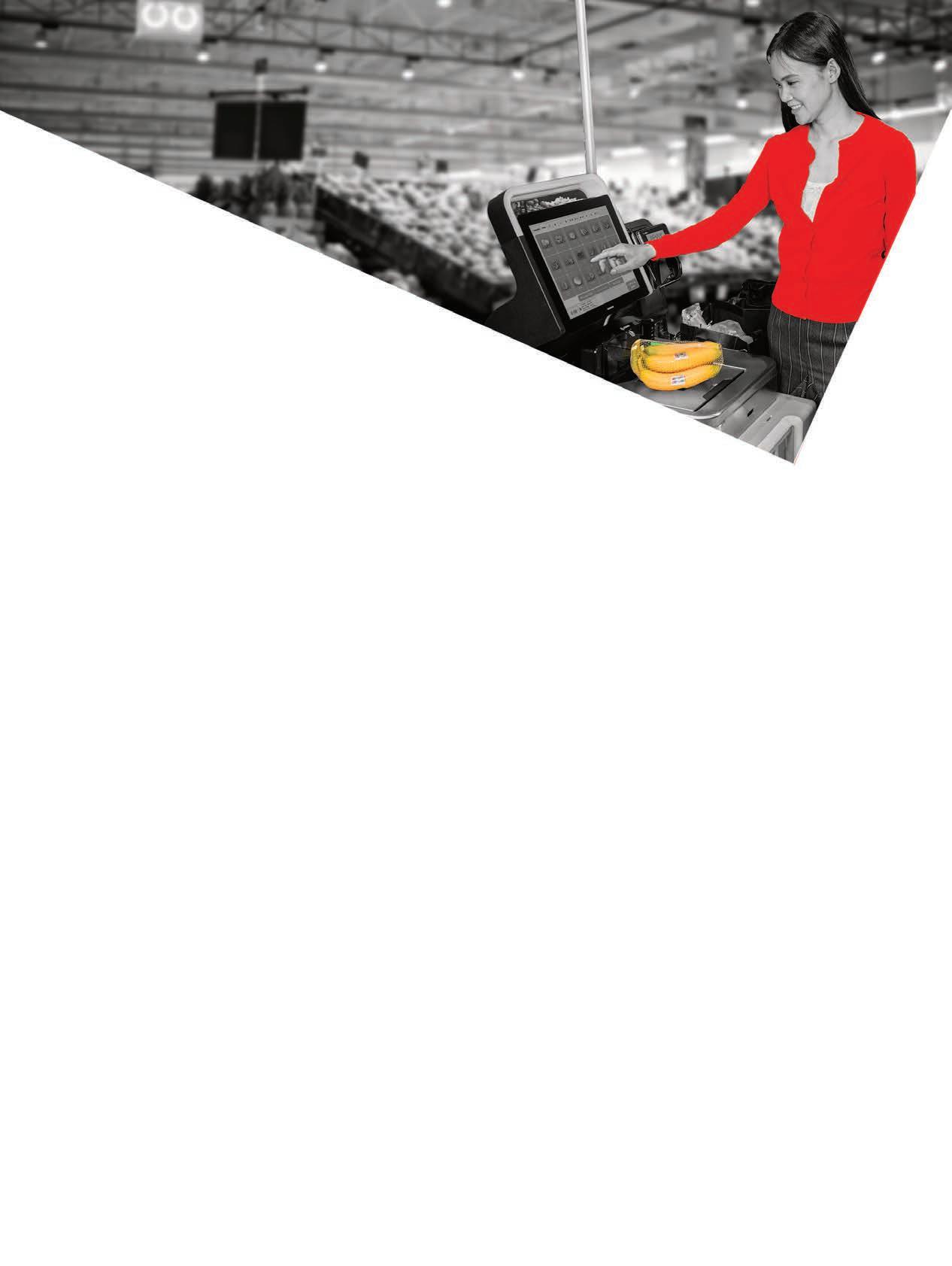
80% of shoppers were interested in trying non-traditional checkouts. ¹
35% of shoppers were very interested in switching retailers if more digital capabilities were available. ²
80% of retailers agree it’s important to offer unified eCommerce experiences across digital and physical stores, but 65% have not yet implemented technology to do so. ³
As we look to the future, we know that in a digital age, things are constantly changing, and new technology is always emerging. In a recent survey conducted by Toshiba and PYMNTS, data found that 80%¹ of in-store shoppers stated that they would like to use nontraditional checkout options, and 66% ¹ reported that these checkout experiences are the options that they most want to try. The growing interest in self-checkout is clear, so retailers must adapt by delivering self-service experiences that give shoppers more control, resulting in less time spent in the checkout line.
Whether your shoppers are looking for contactless payment, mobile shopping, curbside delivery, in-store ordering, traditional checkout, self-checkout, or any other shopping or payment method, you need the flexibility to scale and evolve.
When your technology is adaptable and scalable, you don’t have to incur the cost of ripping and replacing your entire technology infrastructure when it’s time to implement new systems, peripherals, or advanced technology. A broad range of retail technology designed with the future in
As visits to brick & mortar stores become increasingly pre-planned, retailers must convert fleeting physical transactions into long-lasting relationships. This means making adjustments that would allow them to reach people at home. A disappointed shopper is one click away from abandoning engagement with a retailer, so retailers can no longer afford to have channel-locked experiences and capabilities. They must embrace a “unified commerce” approach to succeed in this new world order.
Adding new technologies and experiences will not only ensure a positive experience for your shoppers but they will also help you stay ahead of the competition and differentiate your store. With a drastically changing retail landscape full of innovations and shopping experiences, now is the time for grocers to create their direction for the future to not only deliver shopping experiences customers expect but create new shopping experiences they’ve never seen before.

Retail media is changing the game for both retailers and the brands that advertise with them, and is gaining steam across the industry. Online storefronts and physical supermarkets have become prime venues for retailers to gain unprecedented ad dollars, and according to Placer.ai VP of Marketing Ethan Chernofsky, this segment that operates on very thin margins is being empowered to leverage channels that improve operational efficiency and drive high-margin revenue.
Many grocers have undertaken cutting-edge partnerships to harness the power of retail media, including Albertsons, which recently linked up with The Trade Desk to help ad buyers better understand the connection between ad campaigns and customer sales. Kroger is offering advertisers a software suite through Pacvue that gives them access to programmatic bidding, analytics and automation on Kroger.com.
Other third-party companies are helping smaller food retailers dip their toes in the retail media pool, including Brandcrush (see CEO Teresa Aprile’s comments in the Grocer’s Guide to Tech, starting on page 52), which is working with independent food retailer Woodman’s Markets and others to make it easier for grocers’ brand partners to manage in-store, out-of-store and online advertising assets.
“[T]he ability to empower CPG brands with a high-value promotional activity so close to the point of purchase, to users with such high intent and leveraging far more effective segmentation tactics, is a potential game changer in the physical environment,” says Chernofsky, “and while these tactics are exciting in and of themselves, it is the wider potential they offer for rethinking the value of the store that could truly reimagine brick-and-mortar success.”
—Emily CroweOf late, “personalization” has become a mantra of sorts with regard to all facets of the shopping experience, from offers tailored to individual consumers’ tastes to the ability to have their groceries delivered when and where they want. In fact, more than a “nice to have,” personalization has become an absolute must when it comes to connecting with today’s consumer, as Bloomreach Chief Strategy Officer Brian Walker told attendees during his GenNext keynote speech at Progressive Grocer’s Grocery Industry Week event last month in Orlando, Fla. (see page 64 for more of Walker’s thoughts).
The recent collaboration of food and nutrition digital technology company Sifter and nonprofit organization FARE (Food Allergy & Education) has upped the ante on personalization, however, bringing it into the realm of potentially lifesaving measures. With the aim of making grocery shopping easier and less time-consuming for the more than 85 million Americans with
food allergies and intolerances, the two entities joined forces to offer Sifter’s science-based shopping platform to enable this population to make better food decisions and save hours of time when grocery shopping. The partnership also recognizes that many people with food allergies are also living with other diet-related health conditions. Sifter’s platform, available on the FARE website’s homepage, allows a consumer with complex diet needs — for instance, a dairy intolerance, a nut allergy and diabetes — to identify a wider variety of appropriate foods when shopping online or in-store.
“The FARE-Sifter partnership will help millions of people shop with ease and confidence for allergenfree foods,” noted Judy Seybold, chief nutrition officer at Sifter, when the collaboration rolled out in November.

Expect to see more such solutions that don’t just surprise and delight consumers, but also help them improve their lives.
—Bridget GoldschmidtStore brands have been in the spotlight lately as record inflation has taken hold of the U.S. economy. At least one CEO has pointed to private label specifically as a source of earnings growth: Kroger’s chief executive, Rodney McMullen, said during the company’s second-quarter earnings call that the retailer has been seeing “record engagement” with private brands. For 2023, expect to see continuous attention to this area of the business, especially as major retailers, including Amazon, Kroger and Walmart,
Fine wines will continue to have a place in the world of private brands.

enhance their offerings to encompass the latest market trends.

Last month, as the Private Label Manufacturers Association’s Private Label Trade Show returned to an inperson format for the first time in three years, the sold-out audience in Chicago was treated to a multitude of new products. Overarching trends included plant-based foods and packaging, sustainable sourcing, permissible indulgence, flavor, and, of course, value. Meanwhile, upscale items permeated the “Idea Supermarket,” suggesting that items like raw honey and fine wines will continue to have a place in the world of private brands.
As FMI — The Food Industry Association noted in its 2022 “Power of Private Brands” report, most grocers recognize that they still need to find ways to set their store brands apart from national brands, particularly when it comes to their e-commerce presence. For now, food retailers’ private-brand portfolios hold an average dollar share of 18.2% of total sales, but grocers and their manufacturer partners have an ambitious goal of raising those sales to 22.6% over the next two years.
—Jenny McTaggartOver the past six months, the grocery industry has seen several examples of food retailers finally fully embracing social commerce as a way to drive excitement, engagement and loyalty among shoppers. Retailers such as Albertsons, Kroger, The Fresh Market, Walmart and Sam’s Club have stepped up their strategies around shoppable content, video and livestreams.
For instance, Sam’s Club has launched a new live shopping platform, samsclubshoplive.com, which hosted a series of live shopping events in November. To boost engagement with digital browsers and buyers, the wholesale club chain sponsored a Scan & Go holiday sweepstakes with a grand prize of $50,000.
Over at Sam’s parent company, Walmart Connect, the retailer’s closedloop media business, revealed several strategic partnerships to help create a robust, diverse ecosystem in an effort to expand advertiser support,
increase services and deliver access anywhere advertisers need it. The Innovation Partners program includes TikTok, Snapchat, Firework, Roku and TalkShopLive, each of which will provide “test and learn” social, entertainment and livestreaming opportunities for Walmart sellers.
For its part, The Fresh Market is seeing success with Firework, which has brought its full suite of livecommerce and short-form shoppable video capabilities to the grocer’s owned media channels.
In further examples of social commerce, Whole Foods Market used a trending audio clip to promote its popular Berry Chantilly Cake, while Sprouts Farmers Market went viral on TikTok when a user praised the grocer’s $5 deli sandwiches.
Whether through social media, back-end upgrades that make the buying process more seamless, or myriad other tactics, investing in ways to engage the digital shopper has never been more paramount for retailers.
—Gina AcostaAs more grocers commit to planetsaving policies, store design has become an important part of their sustainability strategies, along with sourcing practices, recycling initiatives and corporate responsibility actions. Much of this imperative is driven by current consumer attitudes: A recent study from Mood Media found retailer sustainability to be a driving factor for shoppers worldwide, with two in three consumers (66%) saying that these practices influence their willingness to stay longer, return to the store, tell friends and buy more. Further, the study discovered that most shoppers want to see retailers lower their energy usage by closing doors to air-conditioned spaces (57%), and enclosing refrigerated spaces and shutting off display lights when closed (54%).
As evidenced by a new Colorado Natural Grocers store, which opened this past September with such “energysaving innovations … as non-toxic building materials and 100% LED
lighting,” in addition to being the retailer’s “first new store featuring a CO2 refrigerant system designed to save energy and provide enhanced environmental protection compared to conventional refrigeration technologies,” these types of features have become table stakes for most grocers eager to prove their eco-friendly bona fides.
Certifications also add credibility, as when Amazon Fresh revealed earlier this year that one of its Seattle stores had become the world’s first supermarket to pursue the International Living Future Institute’s Zero Carbon designation. The 35,000-squarefoot store, which opened this past March, features more than a dozen store design upgrades that Amazon expects will save nearly 185 tons of carbon dioxide annually and help the company achieve its Climate Pledge commitments.
Indeed, attaining company-wide net-zero carbon emissions status has become a stated goal for a number of major grocers, among them international retail conglomerate Ahold Delhaize, with consumers best able to view this progress at store level, one location at a time.
—Bridget GoldschmidtRemember when everyone was worried about the grocery shopping habits of Millennials? Turns out they loved shopping in person for food as much as the previous generations. It’s actually the Zoomers of Generation Z (68 million born 1997-2010) and the Alphas of Generation Alpha (2.5 billion born 2010-present), the first generations who grew up with the internet, who are poised to transform the way that food retailers operate.
That’s in part because Zoomers and Alphas spend a lot of time on TikTok and other social platforms. According to a new report from Cassandra, an insights and strategy group within ENGINE Group, 53% of Zoomers say that they find inspiration for groceries through TikTok.
“Gen Z is truly leaving its mark on everything it touches — and the food industry is no exception,” observes Cassandra SVP Kathy Sheehan. “Gen Z is changing the face of the industry, putting a greater emphasis on a holistic approach to food and using it as a way to express themselves.”
While Gen Z will have massive buying power very soon, it’s Gen Alpha, the largest generation ever, that will truly impact grocery. Alphas are not just digital-first — they’re also sustainabilityfirst. This group will likely prioritize buying from companies with measurable social responsibility cred. While retailers are focused on Gen Z now, they should also start paying attention to Gen Alpha, as that demographic will have the highest expectations of any generation regarding the products and brands that they choose.
—Gina AcostaMany progressively minded retailers are setting short- and long-term net-zero targets that go well beyond consumer considerations. Achieving these goals requires a multifaceted approach that puts retailers in the center of several global environmental megatrends: Minimizing greenhouse-gas (GHG) emissions
Optimizing energy management to reduce energy costs and drive ROI
Transitioning to lower global-warming potential (GWP) refrigerants and/or phasing down the use of hydrofluorocarbons (HFCs)
Electrification of transport vehicles and refrigeration
Integration of renewable energy sources
Reducing food waste
 By
By
or food retailers, the definition of sustainability has evolved rapidly over the past several years. No longer is it merely about transitioning to more environmentally friendly refrigeration systems or reducing refrigerant leaks. Nor is it solely focused on achieving energy-efficiency gains in HVAC, lighting and refrigeration. While these goals are as important as ever, the scope of supermarket sustainability efforts is expanding.
From farm to fork, retailers are considering nearly every aspect of their supply chains as part of their sustainability footprints.
Today’s discerning consumers are increasingly concerned about the food supply chain. They’re seeking organic and natural food products, sustainable packaging materials, and environmentally responsible food-sourcing and -processing practices. They also actively research and seek companies that practice responsible food sourcing. Aligning with these consumer preferences has quickly become a competitive differentiator. What’s more, retaining the loyalty of sustainability-minded customers is increasingly a factor to consider when calculating the return on investment (ROI) of decarbonization.
To help them define their paths to net zero, comply with regulations and drive sustainability initiatives, companies are embracing environmental, social and corporate governance (ESG) commitments within their organizations, typically resulting in a public declaration of their sustainability goals. But with every food retailer having unique targets and priorities, they find themselves at various points along their sustainability journeys.
This article will examine the key considerations that food retailers can use to evaluate their own progress and chart a course for achieving short- and long-term sustainability goals.
Retaining the loyalty of sustainability-minded customers is increasingly a factor to consider when calculating the ROI of decarbonization.
Reducing energy consumption in the face of rising energy costs also provides an opportunity to claim a substantial ROI along the path to net zero.
Various tools and capabilities are available to help retailers hoping to achieve decarbonization.
GROCERS SHOULD SET THEIR SIGHTS ON NET-ZERO TARGETS BY TAKING A HOLISTIC VIEW OF DECARBONIZATION EFFORTS.
André Patenaude
PHC Corporation of North America is a subsidiary of PHC Holdings Corporation, Tokyo, Japan, a global leader in development, design and manufacturing of laboratory equipment for biopharmaceutical, life sciences, academic, healthcare and government markets.







































To






Managing our tissue products, from seed to shelf, ensuring they meet high standards for sustainability and quality.





Part of J.D. Irving, Limited, we have a history of being responsible stewards of our forests. J.D. Irving, Limited has planted more than 1 billion trees since 1957.







PRODUCTS, WE ARE CONTINUALLY EXPLORING INNOVATIVE WAYS TO LIGHTEN OUR ENVIRONMENTAL FOOTPRINT. Respecting the air, water, soil, forest ecosystem, and local communities, our mandate is to manage our operations so they produce the highest quality products and services in an environmentally sustainable and socially responsible manner.
Irving Consumer Products is part of the J.D. Irving Group of Companies. J.D. Irving, Limited has a long history of being responsible stewards of its forests. Each year its forest operations harvest less than 2 per cent of the forest it manages, ensuring that the company grows more wood than it harvests.
Irving Consumer Products’ tissue manufacturing operations are continuing our commitment to the environment by introducing public sustainability goals.







Ensuring the Forest Supply Chain carbon neutral declaration is maintained until 2023 is a key part of Irving Consumer Products’ tissue manufacturing operations’ sustainability goals.







The Irving Forest Supply Chain, which includes Irving Consumer Products, was declared carbon neutral in accordance with PAS2060:2014 from January 1, 2021 to December 31, 2021, with a commitment to maintain to December 31, 2023.

























Our values of Integrity and People & Teamwork are rooted in working together and ensuring everyone is treated with fairness and respect, while belonging and inclusion are key components to delivering on our employees’ experience.


We are proud of the long-established history of supporting our employees and the communities where we live and work, through charitable donations, sponsorships, and employee volunteers.

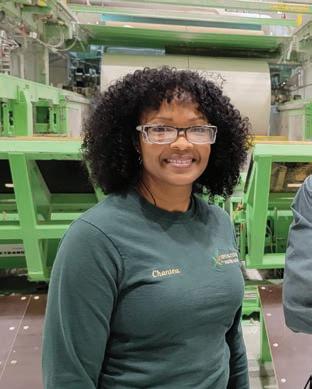

Safety is a core company value. This includes ensuring the effectiveness of our health and safety management system, leveraging technology and analytics to set strategy, taking care of our people, and using leading indicators to ensure we have set the right path.

Global climate initiatives such as the Paris Climate Accord have set 2050 as the year when countries, institutions and companies should strive to achieve net zero. Already, some food retailers are pledging to meet even more aggressive net-zero timelines, such as 2040.
Net zero simply means consuming only as much energy as is produced — balancing the reduction of GHG emissions with carbon-offset strategies to achieve a carbon-neutral operating footprint. Since the path to net zero will be different for every retailer, the Environmental Protection Agency (EPA) recommends using science-based targets as a common framework to help them set and meet their sustainability goals. Understanding the full extent of corporate GHG emissions requires taking a holistic view that’s categorized within three primary sources. Scopes 1 and 2 refer to GHG emissions originating from a company’s own operational footprint, while Scope 3 expands the scope to the company’s larger supply chains.

Scope 1 refers to direct GHG emissions, such as those originating from refrigerant-based commercial refrigeration and HVAC equipment in retail stores and storage and distribution facilities. Minimizing refrigerant leaks and making the transition from highGWP refrigerants to lower-GWP alternatives fall under Scope 1. Most retailers are making these top priorities.
The direct emissions from fuel combustion in boiler furnaces and fleet vehicles are also part of Scope 1 sustainability efforts. These will require retailers to transition to electric transport vehicles and electrify shipping container refrigeration as part of their longer-term net-zero efforts.
Scope 2 encompasses indirect GHG emissions from all sources of energy consumption, including refrigeration, HVAC and lighting. Reducing energy consumption in the face of rising energy costs also provides an opportunity to claim a substantial ROI along the path to net zero. Supermarkets are committing to multiple strategies to reduce indirect GHG emissions:
Installing LED lighting
Leveraging advanced energy management controls and tools to enable grid-interactive optimization
Integrating wind, solar and other locally generated renewable energy sources
Retrofitting equipment to minimize energy consumption and maximize performance with variable frequency drives (VFDs) and other capacity modulation strategies
Scope 3 emissions are among the most challenging to identify and control, as they include direct and indirect emissions from all producers and providers within a company’s supply chain, including emissions occurring after goods are sold, throughout product lifecycles and, ultimately, disposal. Among the many focus areas within this scope are:
Electrification of third-party logistics (3PL) and transportation companies
Sourcing eco-friendly packaging materials for house brands
Implementing more sustainable sourcing practices
Retailers that have embarked upon their sustainability journeys have acknowledged that GHG emissions within Scopes 1 and 2 are much easier to abate, because they’re often within the retailers’ realm of control.
The goal of reducing food waste has become a key pillar in many retailers’ sustainability efforts. According to the Zero Waste International Alliance (ZWIA), zero food waste is defined as follows: “The conservation of all resourc-
Since the path to net zero will be different for every retailer, the EPA recommends using science-based targets as a common framework to help them set and meet their sustainability goals.
es by means of responsible production, consumption, reuse and recovery of products, packaging and materials without burning and with no discharges to land, water or air that threaten the environment or human health.”
Industry leaders are already committing to achieving the Zero Food Waste Certification as defined by ZWIA, prioritizing efforts to identify, track and prevent sources of waste. Others are committed to eliminating the food waste sent to landfills by 2030. Tracking the temperatures of perishable food in storage and on the move is critically important to achieving these goals.

Various tools and capabilities are available to help retailers along their paths to net zero. For instance, over the past decade and longer, research efforts have led to new eco-friendly, energy-efficient refrigeration technologies designed to reduce both Scope 1 and 2 GHG emissions.
A range of solutions is being developed using next-generation, lower-GWP refrigerants — such as CO2, R-290 and emerging A2Ls — to deliver GHG emission reductions. These include:
Centralized CO2 transcritical booster (TCB) compression for large supermarkets
Refrigeration and case controls optimized for lower-GWP alternatives
Advanced leak detection capabilities to minimize direct emissions and maximize performance and safety
Retailers are also leveraging advanced supervisory control systems and expert energy management strategies to bring critical facility energy consumption under centralized control. These advanced controls can be used to:
Reduce peak facility loads via smart optimization techniques and machine-learning algorithms
Coordinate with local utilities to reduce grid loads and incentivize energy-efficient operations
Enable enterprise-wide monitoring of store fleets to drive proactive maintenance programs and prioritize store upgrades
Further, researchers continue to build upon industry-leading compression technologies to improve energy efficiencies in new installations and retrofit refrigeration systems in the following ways:
Enabling the use of variable-capacity modulation techniques via digital compression technologies and VFDs
Providing industry-leading energy efficiencies that help retailers qualify for utility rebates and incentives
Additionally, to help preserve perishable food quality throughout the cold chain, many leading retailers and producers rely on cargo-tracking and -monitoring devices and software. These technologies provide stakeholders with live access to shipment temperature and locations, alerts, and notifications of excursions to help keep in-transit perishable food safe and fresh.
Regardless of your company’s current progress on its path to net zero, a variety of alternatives is available to help you take the next steps and define a strategy to meet your short- and long-term sustainability targets. With expert guidance and proven sustainability solutions that already exist, you can reduce GHG emissions in nearly every aspect of your operations — and do so in a way that’s likely to help your business thrive.













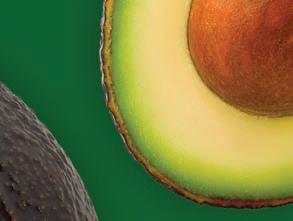

















SPEAKING WITH…Raina Nelson, President and CEO, Westfalia Fruit Marketing USA LLC




Westfalia is committed to producing safe, exceptional quality fruit, all while ensuring sustainable, ethical and responsible management of its bio-resources and the communities and environments across the globe. Nowhere is that commitment more evident than in the company’s prime-quality, ready-to-eat avocados, which Westaflia grows, sources, ripens, packs, processes and markets year-round, all in a sustainable manner.
Progressive Grocer asked Raina Nelson, President and CEO of Westfalia Fruit Marketing USA LLC, to explain how and why the company is committed to sustainability in everything it does.
Progressive Grocer: First, let’s talk about your focus on sustainability as a whole.




Raina Nelson: At Westfalia, sustainability isn’t just a catchphrase. It is engrained in everything we do. Our founder, Dr. Hans Merensky, is regarded as the father of modern avocado production. He was ahead of his time in adopting techniques that conserve water, protect and rejuvenate soils, and offer sustainable livelihoods to the people who farmed his land and beyond. Today, we honor and extend his legacy by taking proactive steps to achieve zero waste to landfill and carbon neutrality, and to reduce pesticide usage on farms. Our sustainability strategy prioritizes the environment, local economies, and most importantly, our people. We believe in growth: the growth of people, the economies we touch, communities that surround us, our customers, our partners, and our products.
PG: That commitment to sustainability is terrific — but does it really matter to retailers who are dealing with so many other challenges these days?

RN: Does it matter?Absolutely! Shoppers care about sustainability, which means retailers should, too. Statistics show that nearly 80% of U.S. consumers consider sustainability (of a product, the retailer, or the brand) when making at least some purchases1; younger generations are increasingly willing to pay more for products with the least negative impact on the environment2; and 43% of avocado purchasers are concerned that avocados are not sustainably grown and processed.3 That means vague avocado sustainability claims could be preventing grocery retailers from reaping business from loyal avocado shoppers.
PG: Westfalia has the distinction of being the global leader in avocados. How do you bring your commitment to sustainability to bear in the avocado market? What is the Westfalia Difference?
RN: Westfalia has developed new ways of growing avocados that protect water resources and produce strong, healthy avocado trees that will bear fruit and nourish the land for decades to come. We’ve pioneered low-flow drip technology that uses small pipes to emit less than one litre of water an hour per nozzle — just enough to replace what’s been lost through evaporation and transpiration. The technique saves water, improves air in the soil, and produces higher yields and healthier soils, allowing our growers to use up to 43% less water while increasing the output and economic value of the fruit. Another example: Westfalia’s developing orchards in Colombia feature 15% to 20% organic carbon in the soils.
While Westfalia is committed to the UN’s Sustainable Development Goals, we also have set our own targets. In 2020, the company improved water-use efficiency by 14%, generated 50% more of its own electricity, reduced waste to landfill by 9%, and lowered its carbon footprint per kilo of fruit by 5%. Our goal is to achieve zero waste to landfill by 2025, carbon neutrality by 2030, and to reduce pesticide usage on farms by 50% by 2035.





PG: We haven’t talked about the quality and availability of your avocados. What would you like to share with grocery retailers?
RN: At Westfalia, sustainability and quality go hand-in-hand. Being market leaders in the ripening process means we can provide fruit at exactly the correct level of ripeness, depending on when the fruit must be ready to eat. Our vertical integration from multiple countries of origin allows us to provide fruit when and where retailers need it, every single day. We have quality avocados all year long. We grow, source and ripen. We research and develop. We pack and process. We sell and ship. And just as important, if not more so, than all of those things, we care and conserve.
The bottom line is that we’re all a part of the future and must all work together to build a bright one.
For more information, email info@westfaliafruit.com westfaliafruit.com 1Sensormatic Solutions, April 2022 study 22019 McKinsey study 3Cooper Roberts Research, “Avocados Tracking 2021”




eventy-seven percent of consumers believe that sustainability is important when selecting products to buy, up eight percentage points from 2021 findings, according to new research from IRI and the NYU Stern Center for Sustainable Business (CSB).
As consumer expectations regarding sustainability continue to evolve, both CPG manufacturers and retailers need to understand and meet those needs.
One area that has seen tremendous growth is packaging. NielsenIQ’s “Sustainability: The New Consumer Spending Outlook” report found that in September 2022, “sustainable packaging” claims increased by 18% compared with three years prior.
As consumer expectations regarding sustainability continue to evolve, both CPG manufacturers and retailers need to understand and meet those needs.
Research shows that 27% of shoppers — and 32% of Gen Z and Millennials — specifically seek out retailers that carry sustainable products, indicating a shopper preference that’s likely to endure and increase over time.
There are plenty of innovative sustainable packaging developments poised to thrive in food retail.

Consumer demand is directly affecting this uptick, as NielsenIQ discovered that 53% of consumers want companies to reduce the amount of plastic in packaging and 46% want them to use sustainable packaging materials.
These environmentally friendly products aren’t a fad that retailers can afford to ignore. IRI and CSB’s research shows that 27% of shoppers — and 32% of Gen Z and Millennials — specifically seek out retailers that carry sustainable products, indicating a shopper preference that’s likely to endure and increase over time.
Here are some of the latest packaging solutions to help meet this growing need.
In the produce department, organic vertical-farming company Upward Farms recently unveiled a resealable packaging design for its line of USDA-certified organic microgreens.

The new resealable design provides a more sustainable offering for consumers compared with the average greens clamshell model, driving a 38% reduction of plastic, and is made with post-consumer recycled content.
The sealed plastic trays are stackable and easier to open and close than traditional clamshells. Plus, the open-and-close technology allows for an extended shelf life for the microgreens.
“Continuously reducing Upward Farms’ carbon footprint is a top priority for us, and our new packaging marks a significant milestone in that journey,” says Jason Green, CEO and co-founder of Brooklyn, N.Y.-based Upward Farms, adding, “Upward Farms’ new packaging is made using post-consumer recycled polyethylene terephthalate (rPET), one of the only truly recyclable plastics.”
“Implementing this resealable technology has allowed us to add value for our consumers by delivering more sustainable, effective packaging,” adds Eric Greifenberger, Upward Farms’ VP of marketing and sales. “Functionality is extremely important to us and our consumers, and through rigorous testing, we have designed a
The new resealable packaging design for Upward Farms’ organic microgreens provides a more sustainable offering for consumers, compared with the average greens clamshell model, driving a 38% reduction of plastic. It also adds to shelf life.
solution that is easily resealable, holds up to stacking in consumers’ fridges and locks in freshness.”
Mars, Inc. is also working with PET. The confectionery manufacturer has collaborated with packaging manufacturer Berry Global Group Inc. to launch pantry-sized treats in PET jars that have been optimized to be lighter weight and include 15% post-consumer resin (PCR).
The easy-grip square jars are produced by Evansville, Ind.-based Berry using a single-pellet food-grade resin to assure a clean, consistent substrate sourced from mechanical recycling. In addition to the inclusion of PCR, the jars are widely recyclable.
The jars, which come in three sizes — 60 , 81 and 87 ounces — will eliminate approximately 300 tons of virgin plastic per year. For the 81- and 87-ounce jars, Berry also reduced the weight by 10 grams per jar, saving 374 metric tons of carbon dioxide (CO2). The CO2 savings are equivalent to 42,084 gallons of gasoline consumed, 45,494,350 smartphones charged, and 72.8 homes’ electricity use for one year.
“At Mars, we want to contribute to a circular economy where packaging material never becomes waste, but is recycled, reused or composted,” asserts Justin Comes, VP of R&D at McLean, Va.-based Mars Wrigley North America. “We have set an aggressive science-based strategy to innovate our packaging, and this change to 15% PCR for these large-format jars is a significant step towards a more sustainable future.”
Attaining better sustainable packaging doesn’t always need to be scientific, however. For example, Shake ‘N Bake, part of the Chicago-based Kraft Heinz Co., is set to save 900,000 pounds of plastic waste annually with its first-ever packaging update. In November, the brand ushered in a new era for its signature packaging by revealing the removal of the plastic “shaker” bag from its products.
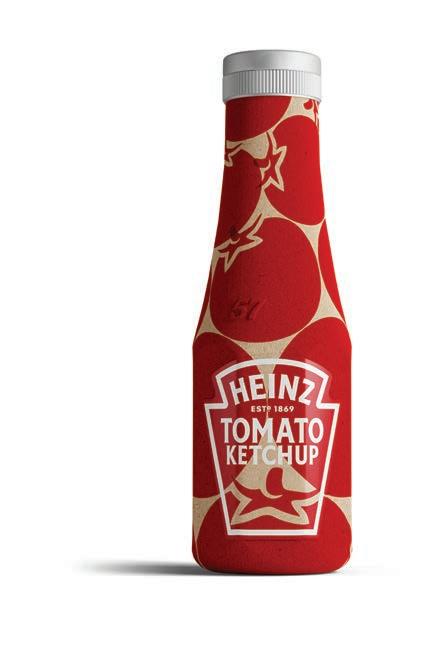
“We want to contribute to a circular economy where packaging material never becomes waste, but is recycled, reused or composted.”
—Justin Comes, Mars Wrigley North America.Kraft Heinz’s iconic Heinz Tomato Ketchup aims to become the first sauce brand to develop a sustainable paper-based bottle in collaboration with packaging technology company Pulpex.
The inaugural Sustainable Packaging Innovations Award winners were Smile Compostable Solutions for Compostability, Amcor for Recyclability, The Clorox Co. for Refill and DeliverZero for Reuse.
In place of the “shaker” bag, consumers are encouraged to shake using a reusable container as the vessel for adding the extra layer of crunch to their favorite recipes. According to the brand, this simple change to families’ mealtime routines is helping eliminate the equivalent in weight to more than 270 midsize cars.
“While the ‘shaker’ bag is an important part of our legacy, our product is just as effective and delicious without the plastic waste, and we are excited for all the good to come from this simple yet effective packaging change,” notes Brianna Galvin, brand manager, Shake ‘N Bake.
Bumble Bee Seafood has achieved 98% readily recyclable packaging with an industry-first shift to paperboard cartons for multipack can products, eliminating an estimated 23 million pieces of plastic waste per year.

Fellow CPG company Bumble Bee Seafoods says that it’s also eliminating an estimated 23 million pieces of plastic waste per year by becoming the first shelf-stable seafood brand to change its multipack can product packaging from shrink wrap to readily recyclable paperboard cartons. The change applies to all multipacks produced by San Diego-based Bumble Bee — a total of 23 SKUs, including four-can, six-can, eight-can, 10-can and 12-can packages. The paperboard is made from 100% recycled material, with a minimum of 35% post-consumer content, and is certified by the Forest Stewardship Council. That means that the multipack is fully recyclable, both the box exterior and the cans inside.
In an effort to further eliminate plastic pollution across the packaging value chain, Walmart Inc. recently joined the U.S. Plastics Pact in October at GreenBiz’s VERGE 2022 conference, in San Jose, Calif., to reveal the inaugural slate of Sustainable Packaging Innovations Award winners. The Bentonville, Ark.-based retailer donated the use of its recently launched Circular Connector platform to help capture innovations for the awards. The honorees cover four categories — Composting, Recycling, Refill and Reuse — with each winner spotlighting scalability, low-cost efficiencies or a customer-first proposal.
The winners were Smile Compostable Solutions for Compostability, Amcor for Recyclability, The Clorox Co. for Refill, and DeliverZero for Reuse.
Darien, Conn.-based Smile’s pods provide a convenient, sustainable solution for polypropylene plastic (PP #5) coffee pods, especially where there’s limited recycling available and food contact is present. PP #5 pods are

The momentum of plant-based foods is undeniable. To us, it seems only natural to put a plant-based product in a plant-based package. Trees are perennial plants. With a harvest to planting ratio of 1 to 3 trees and a recovery rate of 91 percent, corrugated boxes are made to be remade using both new and recycled plant fibers. Natural. Authentic. Remade. Extraordinary.







Learn more about the renewability, recyclability and responsibility of boxes at boxesareextraordinary.com.













Founded in 1998, Fair Trade USA™ is the leading 501(c) (3) nonprofit, third party certifier of fair trade products in North America. The industry leading sustainable sourcing model promotes production practices that preserve the environment, enhance resilience to climate change, and protect the health and quality of life for farmers, fishers, workers, their families, and their communities. Progressive Grocer asked Abby Ayers, Senior Director of Business Development, Retail Partnerships, to discuss Fair Trade USA’s mission and to explain why it is important for grocery retailers.
Progressive Grocer: What role does Fair Trade USA play in the sustainability journey, particularly as it pertains to grocery retailing?
Abby Ayers: Consumers today are demanding sustainably sourced fresh goods, which is increasing the need for resilient, reliable supply chains. Fair Trade USA provides the business training and environmental knowledge and facilitates the capital investment that empowers producers worldwide to create high-quality products. We also certify and promote fair trade products from those producers. We embrace a perspective on holistic sourcing that delivers shared value to suppliers, retailers, and the end consumer by reframing sustainability as an issue that encompasses
social, economic, and environmental sustainability — not one hyper-focused on the environment alone. Our approach is to prevent and/or reduce risk to local environments through legal compliance and management systems; to empower and build the capacity of farmers, fishers, and workers to produce sustainably; and to ensure the resourcing needed to support their sustainability journeys.
PG: Why it is important to consider all three perspectives?
AA: There are three legs of the sustainability stool, and they are completely interdependent. Until social and economic sustainability catch up to environmental, we have not built a truly sustainable movement. Resilient supply chains begin with resilient communities. Investments in programs that deliver more value to producers and workers increase productivity and worker retention for suppliers, as well as the highquality, ethical sourcing that consumers expect from the retailers they patronize.
Retailers and their suppliers have an important role to play in creating a truly sustainable movement, too. They must discuss how they can collaborate to implement solutions that will unlock the promise of this holistic approach and the ROI it can deliver throughout the entire supply chain.
PG: Can carrying more sustainable, ethically sourced products really have a noticeable, positive impact on ROI?
AA: Absolutely! And post-pandemic
data show why. Consumers are more ethically and environmentally conscious now than ever before — and that is impacting their purchasing decisions. Here are just a few figures: An impressive 86% of consumers want more sustainable and equitable products; three in four consumers consider sustainability when choosing between brands; nearly 57% are willing to change their purchasing habits to help reduce negative impact to the environment — and that jumps to 77% among those who say sustainability is important for them. Traceability is important to 73% of consumers, too — and of those, 71% would pay a premium for it.
PG: So, consumers say they want sustainable, ethically sourced product. But do they look for products that are Fair Trade Certified™?
AA: Fair Trade Certified products are produced according to rigorous standards that protect the well-being of farmers, fishers, and workers. Our standards set the global benchmark for sustainable sourcing, strengthen brand trust, and build consumer loyalty. U.S. consumers increasingly know and trust the Fair Trade Certified seal: 66% of the general population of consumers recognize it and it is the most widely recognized fair trade seal in the United States.
By putting our seal on goods made responsibly, fairly, and sustainably, we make it easier for suppliers and retailers to offer the kind of products that that align with the values of today’s sustainability minded consumers.
rarely recycled, due to their small size and the need to separate the lid, filter and grounds before recycling. Smile’s pods compost whole, however, eliminating water waste from cleaning and lid disposal.
Shortly after its win, Smile signed a material sales agreement with Pod Pack International, a Baton Rouge, La.-based co-manufacturer of single-serve coffee and tea pods and cups. The company is now able to produce Smile’s commercially compostable, plant-based and carbon-neutral coffee pods that are compatible with Keurig brewers, enhancing sustainability options for Pod Pack customers.
Meanwhile, AmSky, from Zurich-based Amcor, is a breakthrough blister system innovation, free from vinyl and aluminum. AmSky is both a more sustainable alternative for the most in-demand health care packaging and designed for recycling in rigid and flexible recycling streams.
The Concentrated Refillable Cleaners, from Oakland, Calif.-based Clorox Co., are refill spray solutions. In addition to less plastic used, less weight and carbon are emitted from transport, since customers add water at home.
Reusable delivery containers from New York-based DeliverZero provide a more sustainable alternative for the takeout food industry. DeliverZero containers can be used up to 1,000 times and have a return rate of 98%.
There are plenty of other innovative developments poised to thrive in food retail. For example, Yakima, Wash.-based Kwik Lok recently introduced Fibre-Lok to the U.S. market. Ideal for the baking and produce industries, Fibre-Lok is an environmentally friendly alternative to plastic bag closures. Fibre-Lok has been tested and proven in other markets, including Europe, to deliver the same quality and reliability that customers expect from traditional Kwik Lok products while using 0% plastic. Composed entirely of natural cellulose fiber, the closures are ideal for those looking for a 100% plastic-free solution that’s home compostable in some markets and recyclable in others.
To innovate its iconic ketchup bottle, Heinz is teaming up with London-based Pulpex to develop a paper-based, renewable and recyclable bottle made from
ProAmpac, a leader in flexible packaging and material science, has partnered with JBT Proseal, a tray-sealing machine manufacturer, to offer North America’s first in-line sandwich packaging testing lab at ProAmpac’s Collaboration & Innovation Center, in Rochester, N.Y.

Smile Compostable Solutions signed a material sales agreement with Pod Pack International to produce Smile’s commercially compostable, plant-based and carbon-neutral coffee pods that are compatible with Keurig brewers, enhancing sustainability options for Pod Pack customers.

100% sustainably sourced wood pulp. Heinz is the first sauce brand to test the potential of Pulpex’s sustainable paper bottle packaging for its range of condiments.
The companies are developing a prototype to determine how the cutting-edge innovation could be used for Heinz Tomato Ketchup bottles and other packaging formats in years to come. Pulpex’s current data indicates that the carbon footprint of Pulpex bottles is materially less than glass and plastic on a bottle-by-bottle basis. Once used, they are also expected to be widely and readily recyclable in paper waste streams.
The next step in the process will involve prototype testing to assess performance before testing with consumers and bringing the bottle to market.
“We hope to bring this bottle to market and to be the first sauce brand to provide consumers this choice in their purchasing decisions, as many consumers today are looking for more sustainable packaging options,” says Rashida La Lande, EVP, global general counsel, and chief sustainability and corporate affairs officer for Kraft Heinz. “We’re eager to continue discovering more sustainable packaging for our beloved and iconic brands.”
“We believe that the scope for paper-based packaging is huge, and when global household names like Heinz embrace this type of innovative technology, it’s good news for everyone — consumers and the planet,” adds Scott Winston, CEO of Pulpex.
Testing has also started for multinational food packaging and processing company Tetra Pak. The Pully, Switzerland-based organization started testing a new fiber-based barrier to replace the aluminum layer in aseptic cartons. This step marks yet another breakthrough in the company’s long-term roadmap toward developing an aseptic package that’s fully renewable, fully recyclable and carbon-neutral.
“Early results suggest that the package with a fiber-based barrier will offer substantial CO2 reduction when compared to traditional aseptic cartons, together with comparable shelf
“The scope for paper-based packaging is huge, and when global household names … embrace this type of innovative technology, it’s good news for everyone — consumers and the planet.”
—Scott Winston, Pulpex
life and food protection properties,” says Gilles Tisserand, VP climate and biodiversity at Tetra Pak. “We believe this development will therefore act as a breakthrough in reducing climate impact. In addition, cartons with higher paper content are also more attractive for paper mills; thus, this concept presents clear potential for realizing a low-carbon circular economy for packaging.”
“To keep the innovation engine running, we are investing €100 million [approximately US $102 million] per year and will continue to do so over the next five to 10 years to further enhance the environmental profile of food cartons, including the research and development of packages that are made with a simplified material structure and increased renewable content,” adds Eva Gustavsson, VP materials and package at Tetra Pak. “There is a long journey ahead of us, but with the support of our partners and a strong determination to achieve our sustainability and food safety ambitions, we are well on our way.”
Meanwhile, ProAmpac, a leader in flexible packaging and material science, has partnered with JBT Proseal, a tray-sealing machine manufacturer, to offer North America’s first in-line sandwich packaging testing lab at ProAmpac’s Collaboration & Innovation Center (CIC), in Rochester, N.Y. Designed to form and seal fresh sandwich packaging, Proseal’s GTSV ma chine will be used to optimize packaging design while allowing customers to run trials on new packaging formats without disrupting commercial production operations.
Available in day-fresh and modified-atmosphere options for longer shelf stability, ProAmpac’s Sandwich Wedge is a fiber-based package that includes a thin film lining for product viewing and freshness. Once the film is peeled away, the fiberboard packaging can be introduced into paper recycling streams. With minimal materials used and the majority made from certified-renewable sources, the Sandwich Wedge is lightweight and shipped in a flatpack design for easy distribution and storage.
“The recyclable fiber board sandwich packaging format is in early-stage adoption in North America,” notes Irma Randles, global marketing director for fresh food to-go for Cincinnati-based ProAmpac. “Having a facility to showcase the packaging functionality on a commercial-scale sealing line allows our customers to experience this new technology. The fiber format has been an industry mainstay in the U.K. for years and continues to grow. However, Proseal’s GTSV is the first in-line sandwich high-speed sealing machine in North America.”
Along with increased efficiency, the hermetically sealed packaging extends sandwich shelf life from one week up to one month while maintaining product quality, which ultimately reduces food waste to landfill.
“We’re looking forward to having guests visit ProAmpac’s CIC to see firsthand how this in-line wedge machine, coupled with ProAmpac’s Sandwich Wedge and other award-winning fresh food to-go packaging, will be a game changer in North America,” says Randles.
Grocers are ushering in new efforts to reduce packaging waste through their popular store brands. For instance, Southeastern Grocers Inc. has committed to increasing sustainability for its own-brand packaging by the end of 2028. The company pledged to eliminate the use of polystyrene; make all packaging reusable, recyclable or industrially compostable; and include an average of 30% post-consumer recycled material in all packaging.
“We heard clearly that sustainable packaging is among [consumers’] top concerns, and we listened! In response, we are working with our supplier partners to establish sustainable packaging goals and meet our commitments in 2028. We strive to be the grocer people can always count on, and we mean always,” says Anthony Hucker, president and CEO of Jacksonville, Fla.-based Southeastern Grocers.
Meanwhile, independent grocery store chain New Seasons Market has already transitioned its private label Partner Brand Fresh Pasta packaging from plastic clamshells to a greener option, the Paperseal MAP tray.
Each PaperSeal MAP tray uses 91% less plastic than the fresh pasta’s previous clamshell packaging. By upgrading, the grocer eliminates more than 120,000 clamshells from the waste stream annually. The grocer plans to continue reducing operational waste from its stores, striving to achieve a 60% landfill diversion rate.
“Packaging is a complex environmental problem, and we actively work to balance the tradeoffs required to ensure food preservation while limiting unnecessary excess and waste,” says Athena Petty, senior sustainability manager at Portland, Ore.-based New Seasons. “By upgrading our Partner Brand Fresh Pasta packaging to PaperSeal MAP trays, we’re drastically reducing plastic from the waste stream and extending the shelf life of the product, combating the negative climate impacts of food waste.”
Independent grocery store chain New Seasons Market, which serves the Pacific Northwest region, has transitioned its private label Partner Brand Fresh Pasta packaging from plastic clamshells to the eco-friendly Paperseal MAP tray.

The PaperSeal MAP trays are made from FSC Certified fibers and are fully recyclable once the food-safe liner is removed. In addition to reducing material impact, the packaging extends product shelf life from 12 to 20 days.
“Consumers are increasingly more knowledgeable and interested in where the products come from and what happens to them at the end of life,” notes Karen K. Reed, global director of marketing and communications at Yakima, Wash.-based Kwik Lok Corp.
So, how can other food retailers start to implement sustainable packaging into their own operations? Reed points out that the journey is different for every retailer.
“The first step is to analyze your current packaging to see if you might already be adopting sustainable packaging options or to see if there are opportunities that are easy to implement,” she recommends. “Using science to make data-driven decisions is also important. It’s very easy to make emotional decisions, only to find out later that the science doesn’t support your decisions. Working with organizations like the Sustainable Packaging Coalition or the U.S. Plastics Pact can also provide resources and the opportunity to collaborate with others that may be working towards similar solutions.”
s retailers continue to struggle with staffing issues, many are taking a second look at how they approach hiring, training and employee retention. This has become a priority at a time when scores of retail workers are leaving the industry to work elsewhere.
Data from FMI — The Food Association suggests that the greatest people challenge the industry faces is talent availability and retention.
Arlington, Va.-based FMI’s recent The Food Retail Industry Speaks survey reveals that 46% of supermarket execs believe COVID-19 made it harder to recruit and retain people.

“Supermarket retailers faced historic levels of employee turnover in the last few years, driven in large part by direct safety/wellness concerns due to COVID-19,” affirms Rob Harrold, managing director at New York-based Deloitte Consulting LLP and retail stores practice leader. Harrold adds that the pandemic’s broader work-from-home shifts in the workplace created new options for many front-line workers, which further affected retail turnover.
“The real challenge is just trying to attract people, to just get them through the
door,” acknowledges Rachel Shemirani, SVP at Barons Market, a San Diego-based independent. “The pandemic made people shift their way of looking at what they do for a living, how much they work and what they really want to do.”
“Turnover in all areas of the business is very significant,” notes Kathy Liou, senior human resources manager at Tops Markets LLC, based in Williamsville, N.Y. “Putting the staffing puzzle together requires a lot more pieces now. We’re trying to think outside the box and be willing to flex.”
Lack of flexibility is a dealbreaker in a marketplace in which employees have more job options than ever before. Most food industry executives interviewed for FMI’s recent report agree that offering flexibility and hybrid work options is key to retention.
For instance, Barons recently began offering employees a reduced 40-hour work week.
“We have a lot of moms working for us,” says Shemirani. “They’re incredible employees, and we’re absolutely going to work with their schedule. … We do that for people that want to spend more time with their family or on their hobbies. Balance helps avoid burnout. We’ve had quite a few managers and assistant managers take the offer, and they come to work more energized. They’re happier.”
Most food industry executives agree that offering flexibility and hybrid work options is key to retention.
Raising wages is a first-line tactic for attracting employees, but retailers are also continuing to enrich their benefits packages.
Career development is an important driver of employee engagement and loyalty.
Empowering employees and creating a positive workforce culture are crucial in making employees feel valued.
As retailers struggle to find ways to overcome workforce challenges—on-demand labor apps like Hyer have served as a lifeline for businesses looking to fill gaps amidst uncertainty.
To help retailers better navigate the changing labor landscape, Progressive Grocer recently spoke with Dave Dempsey, CEO of on-demand labor app, Hyer, to discuss how the gig economy is helping grocers not just survive during these times, but thrive.
PG: The grocery industry continues to face unprecedented labor challenges across the supply chain— employee churn is 98% and labor concerns still remain the top issue. How is Hyer helping solve these issues?

DD: Designed to support the flexible labor needs of both businesses and workers, Hyer is a marketplace that connects a network of over 300,000 Taskers to retailers and brands, in real-time. Businesses can quickly react to spikes in seasonal demand or supplement their current workforce without any commitment or planning.
From manufacturing to distribution centers—to the retail shelf—Hyer allows businesses to get the help they need, when and where they need it.
PG: What are some benefits of using Hyer compared to traditional staffing methods?
DD: By leveraging a pool of on-demand workers, businesses can avoid the time, resources and high overhead that comes with traditional employment. Think recruitment, onboarding and benefits–not to mention turnover costs. Companies can build an internal talent marketplace by leveraging gig workers, helping take pressure off HR and the bottom line.
PG: How does Hyer work?
DD: For businesses, it’s as simple as ordering an Uber. Giving you full control, you can post a task, set the desired hourly pay or fixed rate, and choose the Tasker you’d like. In fact, you can even send private Tasks to your favorite Taskers—where you’ll build rapport and perhaps hire to a full-time role without any fees. It’s straightforward and simple.
PG: With inflation fears top of mind and a still-tight labor market, how can Hyer help businesses navigate what’s next?
DD: Stepping into the new year, many companies are taking a more conservative approach to hiring. However, they’re still looking for ways to get the help they need without the added expenses. That’s where Hyer comes in.
Helping businesses optimize their workforce, Hyer enables companies to match supply to demand. By gauging your workforce along with economic headwinds, businesses can respond in real-time by tapping into a pool of workers who are motivated and ready to work.

PROGRESSIVE GROCER RECENTLY REPORTED THAT LABOR ISSUES HAVE LED TO $63 BILLION IN SALES LOSSES FOR GROCERS THIS YEAR.
Retailers are mining additional resources to stretch their labor forces. Tops has been hiring more workers under the age of 18. “We might need someone at the register for the dinner rush from 4 p.m. to 7 p.m., so we plug in a 16- or 17-year-old,” explains Liou. “We give them the ability to work when they can, and since it’s a first job for many of them, we teach them skills they can take with them down the road.”
Meanwhile, Grand Rapids, Mich.-based SpartanNash has expanded its internship program by partnering with local universities to provide career opportunities for both college students and recent graduates. “We are committed to increasing this program five-fold in the coming years and maintaining our retention of summer interns into part- or full-time year-round employment after their program ends,” says Deann Wright, the company’s senior director, diversity and inclusion. “After the most recent session, we were able to welcome 68% of our interns into either part-time or full-time positions, which speaks to the rewarding experience they had through the program.” The company plans to have 60 interns in 2023 and 90 in 2024.
Cristian Grossmann, CEO of San Francisco-based Beekeeper, a software platform for front-line workers, has seen retailers leverage the power of employee referrals to find new employees. “We recently released a module to enable employees to easily refer friends,” he notes. “We’ve seen great success with incentivizing employees to bring new, like-minded employees to work.”
Fostering relationships with community organizations has helped The Giant Co., a banner of Ahold Delhaize USA, identify potential talent. “We are also working to streamline our application and hiring process to make joining The Giant Co. as simple as possible,” said Jennifer Heinzen Krueger, VP of team experience at the Carlisle, Pa.-based supermarket chain.
Raising wages is a first-line tactic for attracting employees. Tyler, Texas-based Brookshire Grocery Co., for one, has made multimillion-dollar investments in wages across the organization to boost employee satisfaction and retention. “Recognition also plays an important role,” notes Rosemary Jones, the company’s EVP-chief people officer/legal.
“At our distribution operations, we increased wages to be more competitive. We also added attendance bonuses, weekly and monthly employee recognition initiatives, and revamped our referral program.”
Still, in this new marketplace, increasing wages isn’t enough. “Employees still want a fair wage and bonuses, but that’s not the reason why people stay anymore,” observes Doug Baker, VP, industry relations for FMI. “It’s flexibility, training and skills development, investment in education.”
Retailers are continuing to enrich their benefits packages to attract employees. For instance, Barons recently increased its employee discount from 10% to 15% and made vacation and dental insurance available to all employees.
The Kroger Co. recently piloted a program with Cohoes, N.Y.-based Goldman Sachs Ayco to offer associates financial counseling services. Salaried and hourly associates have the opportunity to access financial coaches and supportive programming as part of the free and confidential service. Online tools and resources and trained one-on-one financial coaches are available to help associates look at their total financial picture and advise on financial decisions. Program participants can create a savings plan and explore opportunities to maximize available company benefits.
“Kroger is the first retailer in the nation to offer this kind of benefit to hourly workers,” asserts Theresa Monti, VP of total rewards at the Cincinnati-based grocer. “We know financial wellness is essential to all of us. This is an important way we are improving our associate experience — empowering anyone to thrive and grow at Kroger.”
To support its team members who want to be a part of something bigger and make an impact, The Giant Co. offers its employees paid time to volunteer in areas that they’re passionate about, according to Krueger. “We believe that when we work together to make a difference in the community, it also helps to create a stronger sense of engagement in The Giant Co.,” she says.
Deloitte’s Harrold notes that retailers have shifted away from a “refilling the bucket” mentality to a focus on investing in training and retention, and experts agree that career development is a key driver of employee engagement and loyalty.
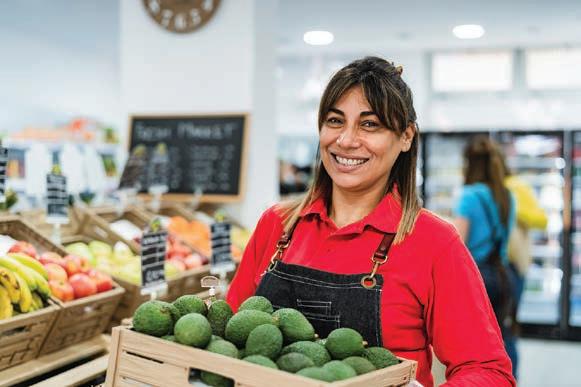
“Incorporating upskilling programs, career coaching and industry certifications will be critical for grocers looking to build a workforce committed to a future at their company and to embedding a future talent pipeline,” notes Ross Forman, managing director of Chicago-based professional services network BDO USA’s Corporate Real Estate Advisory Services practice. “When employees believe an organization is invested in them, they commit to the organization.”
In addition to a matching 401(k) plan, associate discounts, quarterly bonuses and health benefits that en-
compass medical, dental and vision, Jacksonville, Fla.-based Southeastern Grocers offers associates various advancement opportunities.

“Our corporate leadership development platform, SEG University, provides personal and professional development resources to help associates advance their careers through leadership courses, lunch-and-learns, and other engaging workshops,” says Raymond Rhee, the company’s chief people officer. “Our Retail Leaders program provides leadership training for SEG’s current and future store leaders through a series of interactive workshops and on-the-job training.”
For its part, The Giant Co.’s Giant University platform provides team members with opportunities to grow their skillsets. The training helped 4,092 team members receive internal promotions last year, according to Krueger.
Creating a positive culture is another way that retailers can make employees feel valued, motivating them to be strong team players and contributing to higher store morale.
“A focus on culture is a game changer,” affirms Shemirani. “We always say if we take care of our employees, they’ll take care of our customers. We encourage our employees to think creatively, and we get a lot of good creativity out of them.”
Allowing store employees to take initiative — and even risks — fosters a sense of ownership and pride in what they do. In this vein, Tops encourages store personnel to take ownership of projects. “We partner with vendors on sales contests, or run promotions to see how many items a store can move based on how creative the displays are,” says Liou. This type of involvement is not only fun, it’s also a key team builder for store personnel.
Feedback and access to management are also part of a desirable workplace. “Retention is highly important for us,” notes Brookshire’s Jones. “We conduct surveys and stay interviews at various intervals of the employee lifecycle. This helps with retention, because employees feel valued when we value their feedback.”
—Kathy
t New York-based Bowery Farming, they believe in continuous improvement of product and processes. That belief was fully on display at the company’s largest indoor-farming facility to date, the approximately 150,000-square-foot Bethlehem, Pa., farm, which Progressive Grocer was recently invited to visit.
With safety and sanitation protocols firmly in place, the tour, led by SVP Design and Development Scott Horoho and VP Communications Graham James, got underway. The first stop was the seed room, where the correct number of seeds is implanted in flats — each with its own bar code containing all of the necessary information about the seeds — that are then placed on customized germination racks optimized for space utilization and sanitation.
Next on the itinerary was the germination room — or rooms, since there are four, each providing the ideal growing conditions for certain cultivars. Once germination has occurred, the seeds travel to the grow room, which features 15 robots to place them in the correct position. The grow room features plants at different phases of growth, but the Bowery Operating System (OS) keeps track of them all, making sure that the correct growing “recipe” is delivered to each cultivar, with cameras and monitors carefully monitoring their progress. In fact, a team in Kearney, N.J., actually runs the farm remotely.
One particular feature of Bowery’s growing process, as Horoho pointed out, is that much of the machinery in use has been specifically customized to the company’s particular needs. While in this area, PG was treated to some freshly picked greens, including tender red oakleaf and butter lettuces, mustard frills that fully lived up to their name, and a mellow kale.
From there, the plants are moved to a space where they’re transplanted into larger receptacles to aid growth, and then returned to the grow room. This action, which used to be done by hand, has now been automated, which has sped up the process by an amazing 600%, according to Horoho, who further noted that all employees gain hands-on experience via “farm days,” during which they learn how the crops are grown. The engineers he oversees do two weeks of this activity.
When the plants are ready for harvesting, they go to chill and cold pack rooms where specialized machines that can distinguish among the various cultivars weigh them to determine the size of the yield and check for defects; then the plants are assembled into customized blends according to customer specifications, packed, and placed in cases awaiting shipping to local foodservice providers, restaurants and

retailers, among them Whole Foods Market, Giant Food and Albertsons Cos.-owned stores, as well as local independents such as Gerrity’s and e-commerce partners like Amazon Fresh. Horoho estimated that the entire process, from the planting of the seeds until the harvested crops are loaded onto trucks, is in “the upper 90th percentile” hands-free. It also takes a mere 25-30 days, enabling Bowery to achieve 10-12 growth cycles per year.
While many indoor-farming companies boast their sustainability cred — less water usage than traditional crops, no pesticides, the ability to grow crops locally rather than transporting them from far away — the true differentiator for Bowery is its OS, which Horoho described as the “central nervous system” of the organization, enabling it to make its process more intelligent and efficient, and facilitating an ecosystem on a potentially global scale. Additionally, the company’s breeding of certain cultivar seeds for taste rather than hardiness — the latter quality no longer being an issue in a controlled-agriculture setting — could quite possibly transform the typical supermarket produce department. For one thing, as James observed, “Seasonality is gone,” since these cultivars can be grown year-round.
Meanwhile, Bowery continues to learn from its operations, and with each successive iteration — besides the R&D facilities in Kearney and the farm in Bethlehem, there are farms outside Baltimore, Atlanta and Dallas, with scouting in progress for two more sites — it continues to enhance the growing process via its OS, thereby enabling its network of farms serving local communities to “get smarter all the time,” as James and Horoho put it.
The Bowery Operating System meticulously keeps track of a multitude of plant cultivars at different phases of growth.
A VISIT TO BOWERY FARMING’S LARGEST FACILITY TO DATE REVEALS HOW THE COMPANY IS IN THE FOREFRONT OF CHANGING HOW PRODUCE IS GROWN AND SHIPPED.











In what Cleveland Kitchen is hailing as a snack innovation, the brand has introduced single-serve lightly fermented pickle chips. The refrigerated snack packs a probiotic punch, unique in the savory snacking space. It also capitalizes on consumer interest in veggies as convenience foods. The product line comes in two varieties: Hot Picks, for the spice enthusiast, and fan favorite Dilly Garlic. As with its other fermented offerings, Cleveland Kitchen sources local ingredients whenever possible and never pasteurizes its pickles for maximum gut-health benefit and fresh taste. A 3-ounce resealable pouch of either variety retails for a suggested $2.29. https://www.clevelandkitchen.com/

Family-owned business Heritage Kulfi has created its own modern take on a frozen dairy dessert long popular throughout South Asia, combining fresh milk and cream from local and regional farms with all-natural, non-GMO ingredients. Local sourcing also results in a reduced carbon footprint for logistics and transport, according to the certified minority-owned business. Offering a creamy texture achieved through Heritage’s proprietary slow-cooking process, the kulfi line comes in eight vegetarian, eggand gluten-free, halal flavors – Cardamom Chai, Earl Grey, Alphonso Mango, Saffron, Pistachio, Rosewater, Vanilla Bean and Coconut – with vegan and dairy-free flavors currently under development. The product comes in 1-pint sustainably sourced paper containers at a suggested retail price of $7.99 each. https://heritagekulfi.com/


Created by celebrity chef Ming Tsai and Just Egg, MingsBings are convenient plantbased breakfast pockets based on traditional Chinese flatbreads. Using his signature East-meets-West technique, Tsai blended the ancient bing format with familiar American flavors, adding a plant-based spin. The frozen handheld line features Just Egg alongside other plant-based ingredients to create vegan breakfast offerings without gluten or nuts. MingsBings flavors are as follows: Plant-Based Egg & Cheese, combining Just Egg, dairy-free cheddar and potato; Plant-Based Sausage, Egg & Cheese, featuring plant-based sausage, Just Egg, dairy-free cheddar and potato; Plant-Based Chorizo, Egg & Cheese, consisting of plant-based chorizo, Just Egg, dairy-free cheddar, peppers, onions, black beans, corn and potato; and PlantBased Veggie, Egg & Cheese, stuffed with spinach, peppers, onions, Just Egg, dairy-free cheddar and potato. The suggested retail price is $6.99 per 8.8-ounce pack of two bings. https://ju.st; https://mingsbings.com/
Already known for its better-for-you snacks, bean-based food brand The Good Bean has now entered the ready-to-eat category with the launch of Heat & Eat bean-based meals. Inspired by the company founder’s various culinary journeys, the line combines restaurant quality, taste and convenience with plant-based nutrition from beans in four savory options: Indian Coconut Curry, Low-Carb Classic Chili, Santa Fe Green Chili and Mexican Smoky Chipotle. All of the flavors are vegan, gluten-free and made with regeneratively grown beans sourced directly from domestic family farms. Created for wellness-minded consumers seeking clean labels and products that align with their values and lifestyle, the microwavable meals are ready to eat in 90 seconds as an easy main meal or as a side dish. Each pouch contains 7-11 grams of protein and 6 grams of fiber per serving. The suggested retail price for a 10-ounce pouch of any flavor is $3.99. https://thegoodbean.com/

With the launch of Frito-Lay Minis, consumers can now enjoy bite-sized versions of their favorite Frito-Lay snacks. Conveniently packaged in easyto-pour canisters, the product line makes it easier than ever to snack on the go or share with friends. The bite-sized snacks come in a range of options: Doritos Nacho Cheese, Doritos Cool Ranch, Cheetos Cheddar, Cheetos Flamin Hot, SunChips Harvest Cheddar and SunChips Garden Salsa. Frito-Lay Minis items are currently available at select retailers nationwide for $2.79 per approximately 3-to-5-ounce canister. Frito-Lay Minis is one of the many brands that make up Frito-Lay North America, the $19 billion convenient foods division of PepsiCo Inc. https://www.fritolayminis.com/; https://www.fritolay.com/; https://www.pepsico.com/

General Mills Foodservice is enabling retail bakeries to offer premium baked goods easily with the first-ever Pillsbury-branded retail-ready bakery item. Pillsbury Cinnamon Rolls come in an eye-catching clamshell container complete with graphics featuring the iconic Doughboy. Ready to place in the bakery after thawing, the product provides a low-labor way for retailers to offer cinnamon rolls with homemade taste from the top brand in the category. Pillsbury Cinnamon Rolls come frozen in cases of 12 clamshells that have a five-day post-thaw shelf life and a six-month frozen shelf life. A 14-ounce package of four 3.5-ounce pre-frosted rolls retails for a suggested $6.99. Pillsbury also offers an extensive line of baking mixes and ready-to-bake items to allow bakeries and foodservice operations to maximize back-of-house labor in the production of high-quality, scratch-like baked goods. https://www.generalmillscf.com

Better-for-you dip and guacamole maker Good Foods has introduced convenient Grab & Go snack packs for two of its most popular products: Chunky Guacamole and Plant Based Queso Dip. The single-serve packs feature Good Foods’ dips, made using high-pressure processing technology for ultimate flavor and freshness and paired with corn tortilla chips. Both varieties are Non-GMO Project Verified, vegan, gluten-free and contain 180 calories or under. A 2.5-ounce pack of either variety retails for a suggested $3.99. https://goodfoods.com/

Plant-based meat brand Beyond Meat Inc. has now launched Beyond Steak, which aims to deliver the juicy, tender bite of sliced steak tips with the added nutritional and environmental benefits of plant-based meat. Seared and chopped into bite-sized pieces, Beyond Steak is packed with 21 grams of protein per serving while being low in saturated fat and containing 0 milligrams of cholesterol, with no added antibiotics or hormones. Ideal for quick and easy meals, the frozen product can be prepared in a skillet or air fryer in just five minutes and added to such popular dishes as fajitas, tacos, stir-fries, sandwiches and salads. The suggested retail price for a 10-ounce package is $7.99. https://www.beyondmeat.com/en-US/

THE RECENT TOP WOMEN IN GROCERY LEADERSHIP DEVELOPMENT PROGRAM TURNED OUT TO BE EDUCATIONAL FOR ITS MODERATOR AS WELL.


hen I was tapped to moderate the majority of the sessions of the Leadership Development Program (LDP) offered during Progressive Grocer’s Top Women in Grocery event in early November in Orlando, Fla. — aided by my fantastic colleagues, Senior Editor Lynn Petrak, Multimedia Editor Emily Crowe and
Editor-in-Chief Gina Acosta — I was admittedly nervous. Although I had covered the grocery industry extensively during my 19(!) years with the publication, I had only limited experience moderating — or even participating in — a panel. That was all about to change, however, as I dove into the wonderful world of helping to plan a world-class event by programming impactful content for attendees, most of them Top Women honorees.
What was meaningful for me over the two days of the program was to have a front-row seat, as it were, to our incredible speakers’ personal stories and wise insights. It was nothing less than inspirational to hear how Liangxiao Zhu, VP of engineering at DoorDash, navigated her way through a heavily male-dominated industry to discover her voice, as well as her ability to lead; how store managers Pam Seivert, of Hornbacher’s, and Shannon Risley, of Niskayuna Co-op, held their staffs together with determingation and
compassion while dealing with daunting labor and supply chain issues amid a deadly pandemic and its aftermath; and how Meg Ham, president of Food Lion, embarked on her lifelong mission to create a culture of diversity, equity, inclusion and belonging among her company’s associates. An additional honor was having Sarah Alter, CEO and president of NextUp, lead her own timely panel on the important topic of allyship.
From my vantage point on stage, I could see that audience members were inspired, too, as shown by their assiduous note taking, rapt expressions, spontaneous outbursts of applause, and thoughtful, heartfelt questions. In fact, some of the sessions would have easily lasted longer than the allotted 30 minutes, since there was no shortage of queries from fully engaged attendees.
As the sessions progressed and I got over my initial stage fright and grew more comfortable speaking in public again — as with everyone else, it’s been a while, thanks to the pandemic — I also came to the realization that although I was up there in front of a lot of people, it wasn’t about me at all. It was about the program’s amazing participants, both on the panels and in the audience, and what they were able to add to the event for everyone present. That made for a humbling and joyful learning experience indeed.
As an added bonus, however, LDP attendees were unbelievably kind to me and my colleagues, offering praise and encouragement at every step along the way, so that any hiccups in the presentations — scheduling shuffles, time management, mike mishaps and the like — were soon forgotten, and only the warm glow of connection remained. That is the essence of our Top Women in Grocery program, and long may it prosper.




